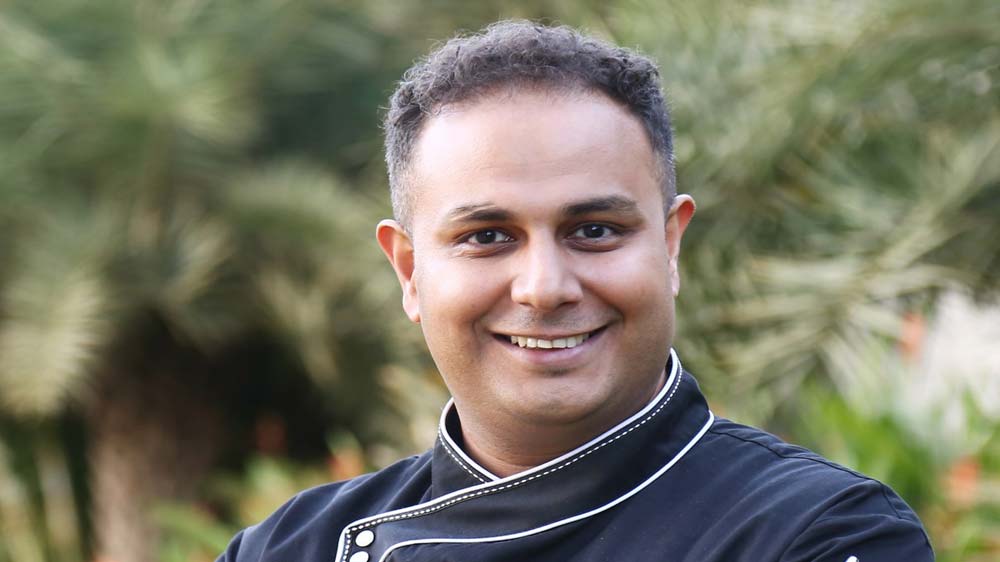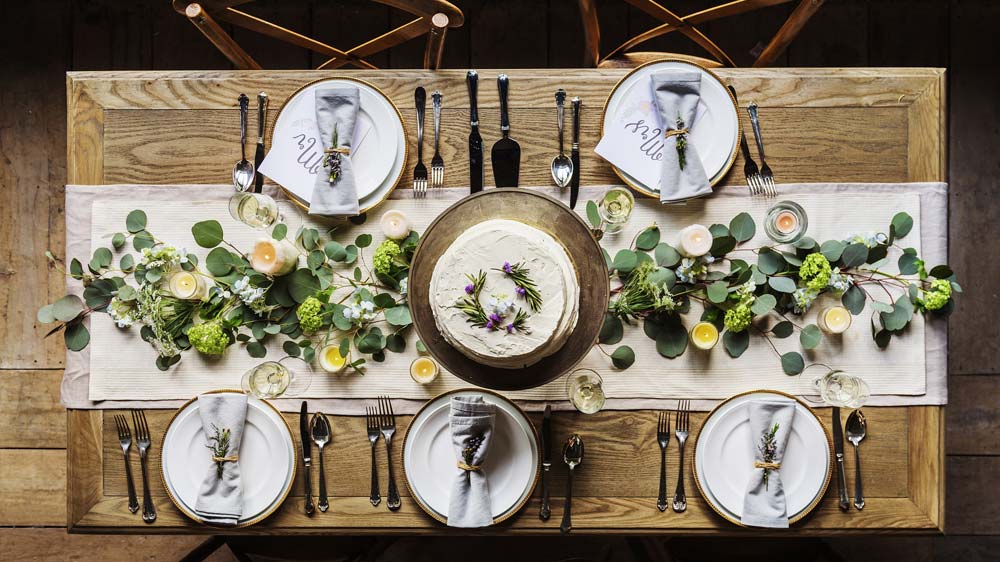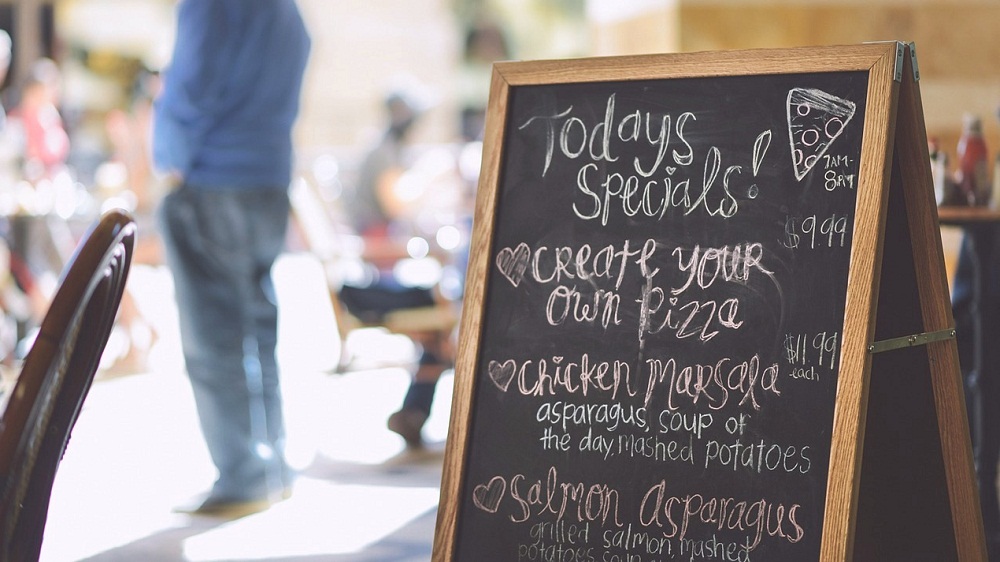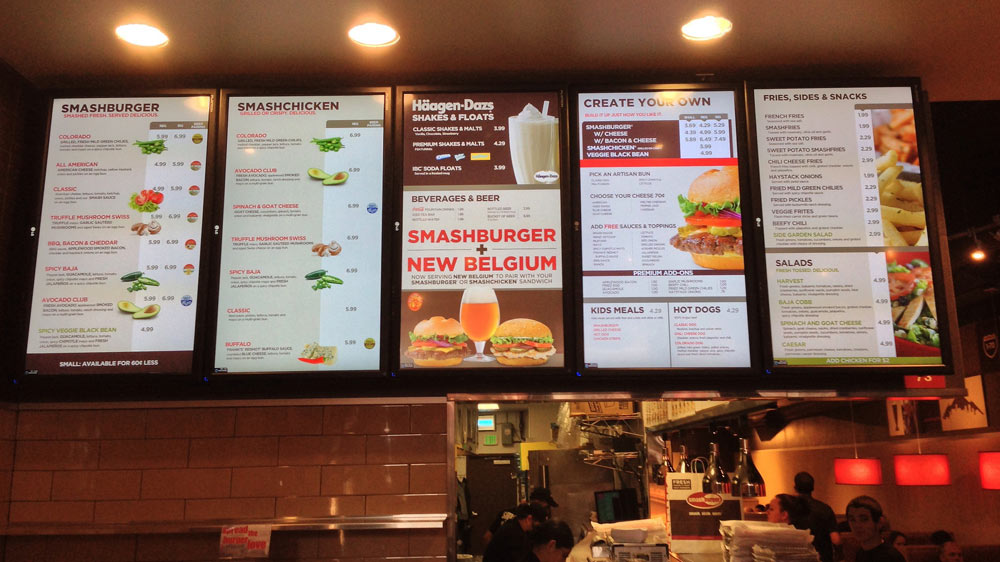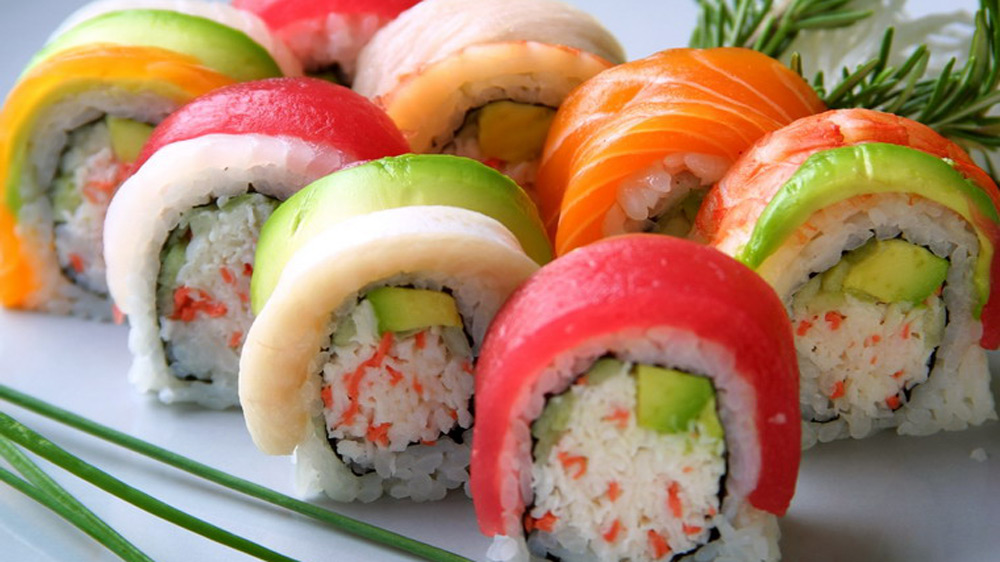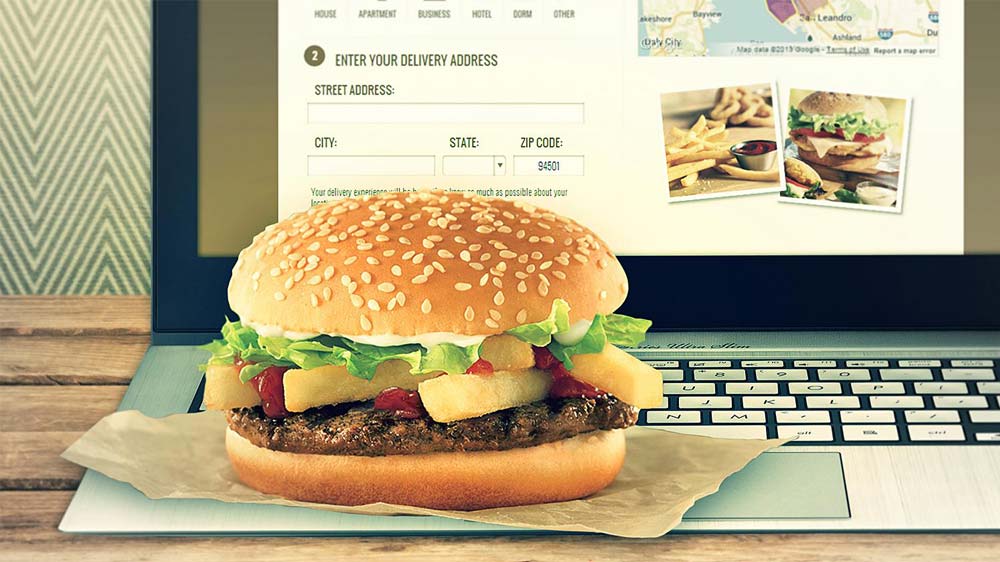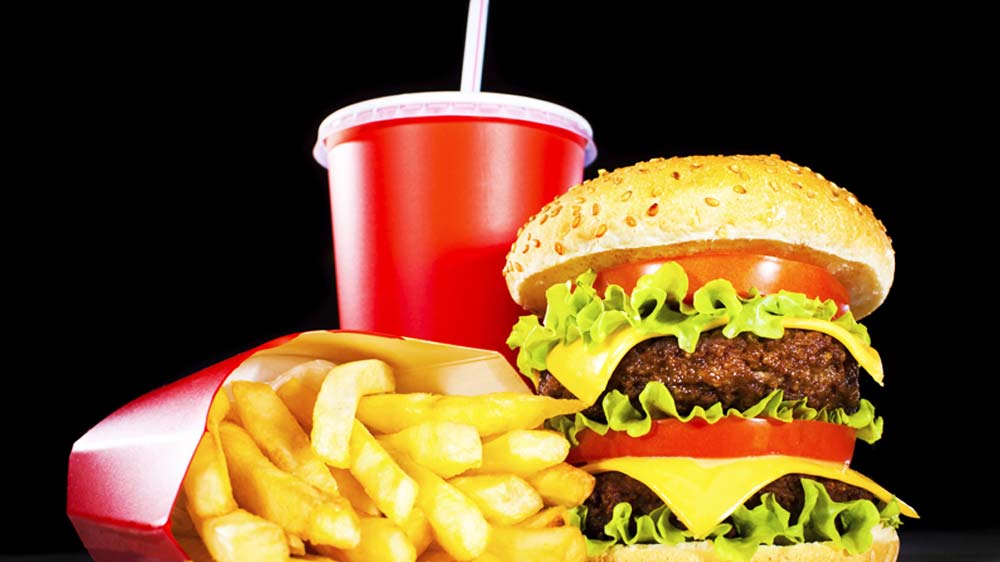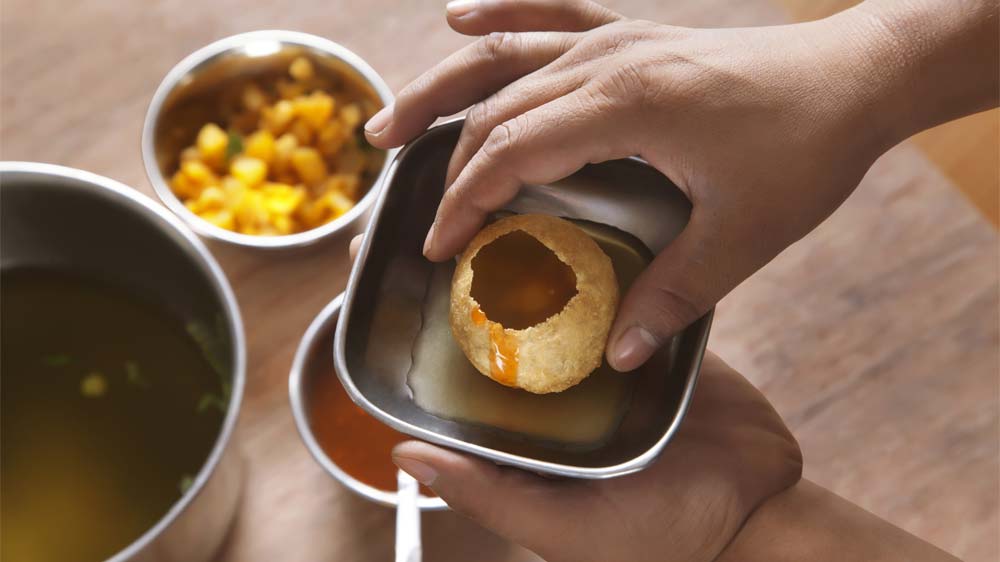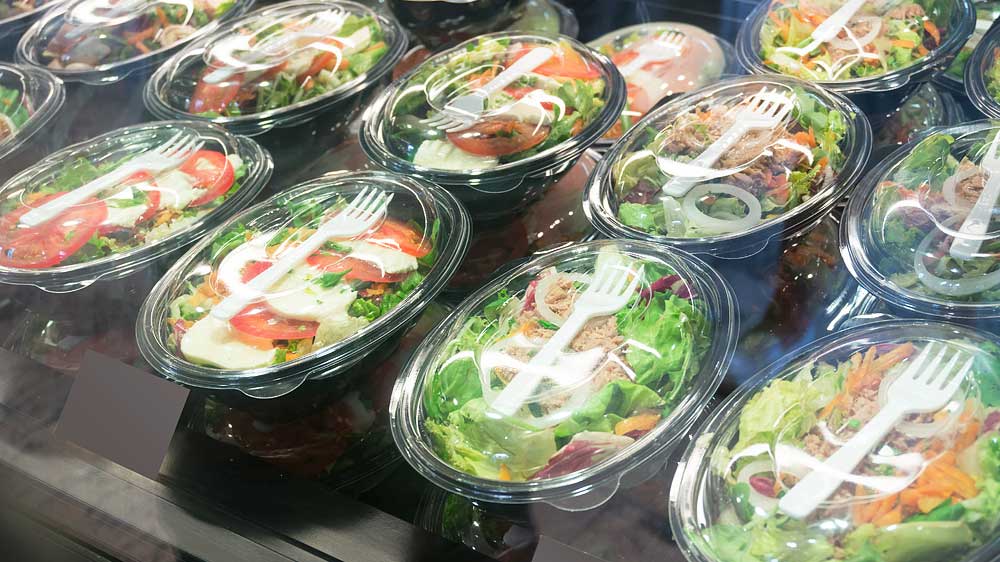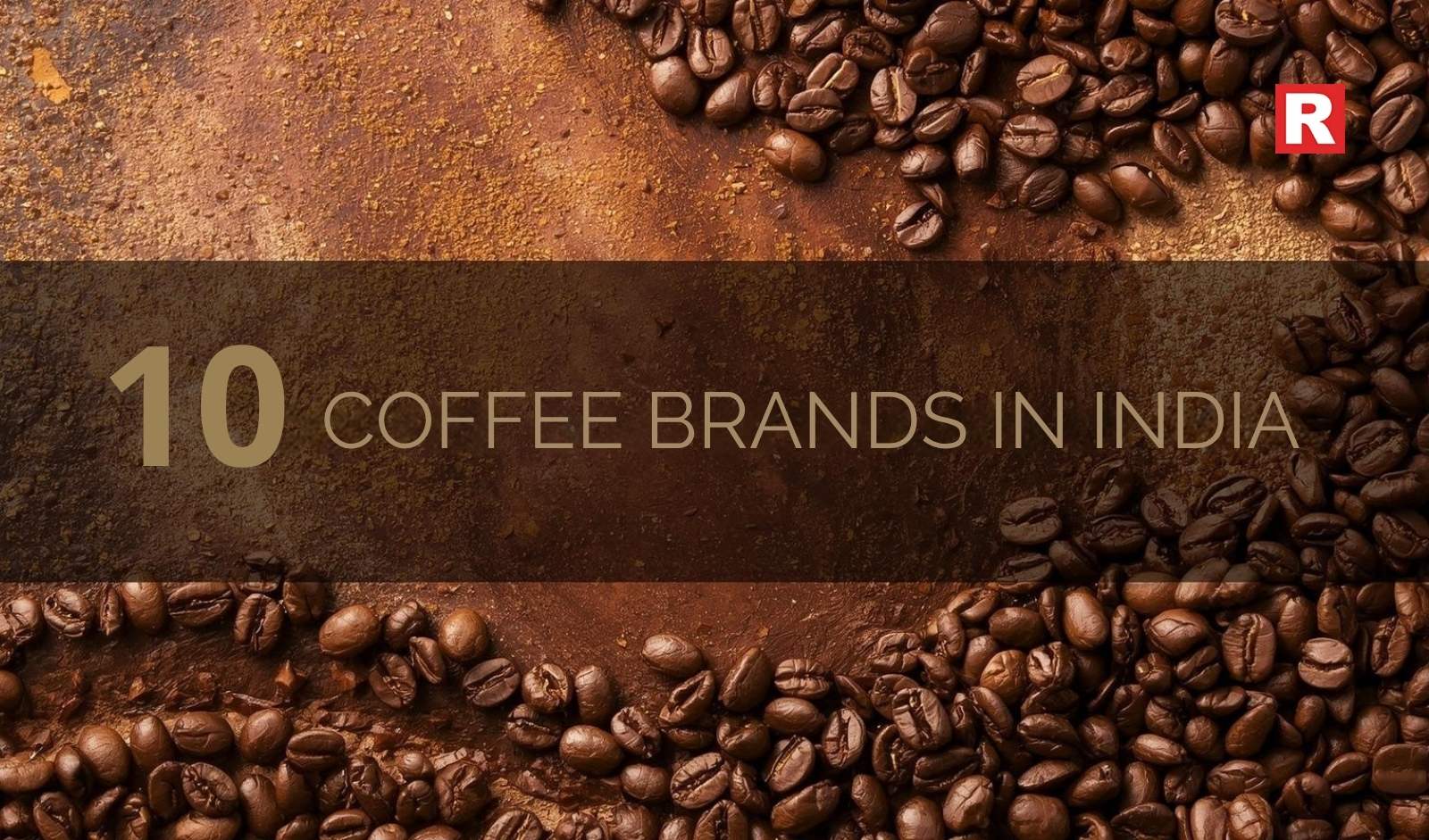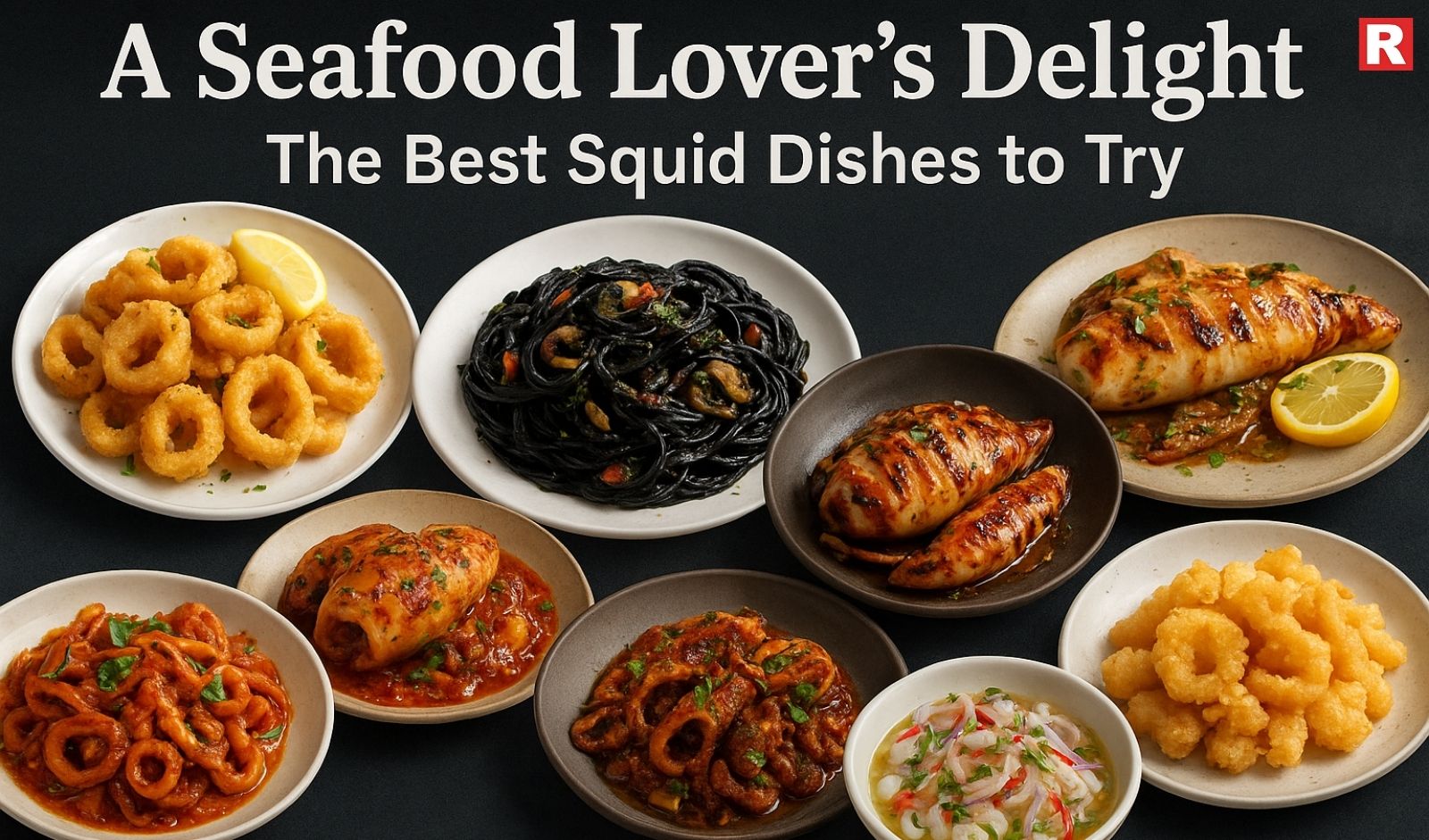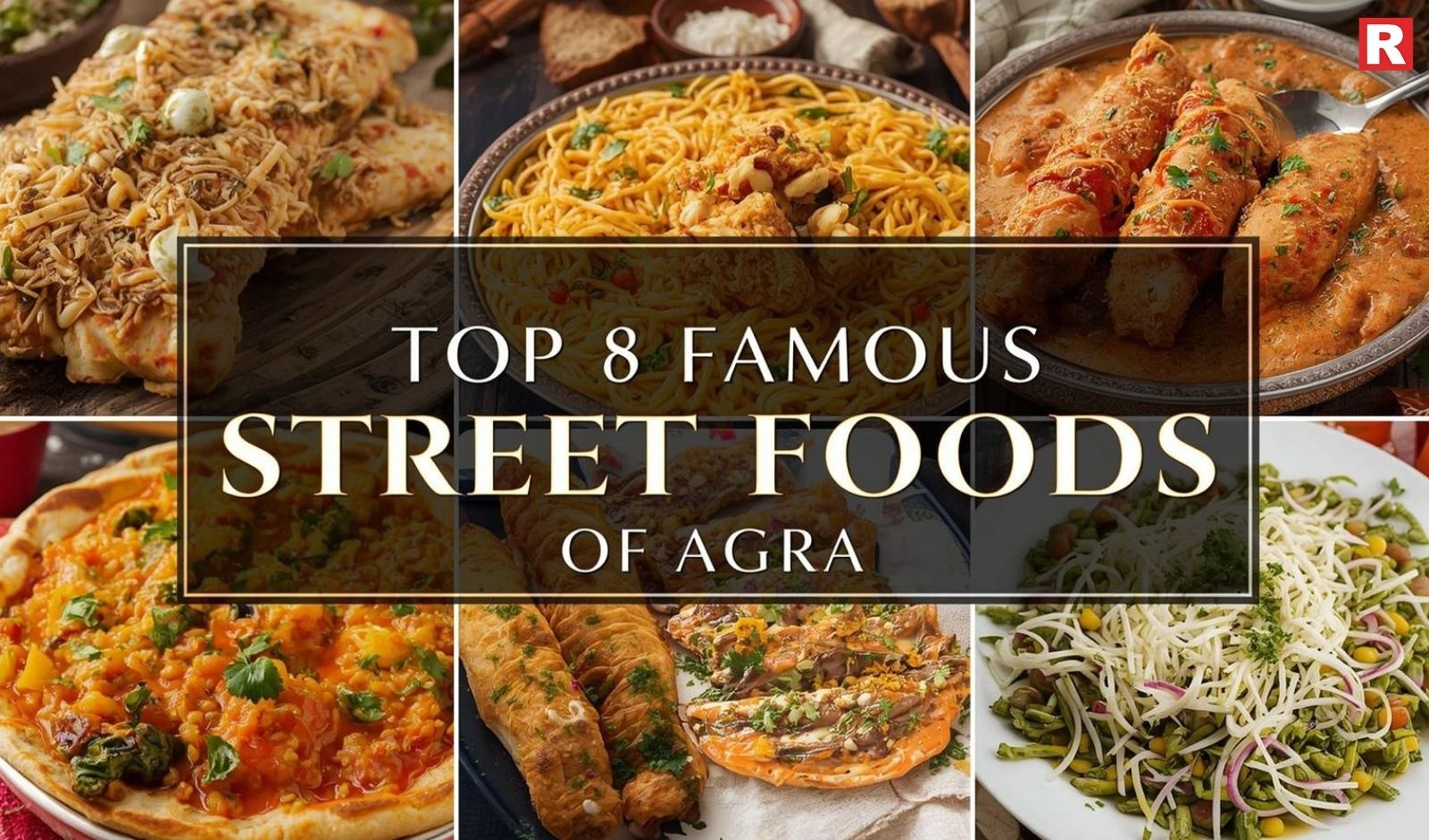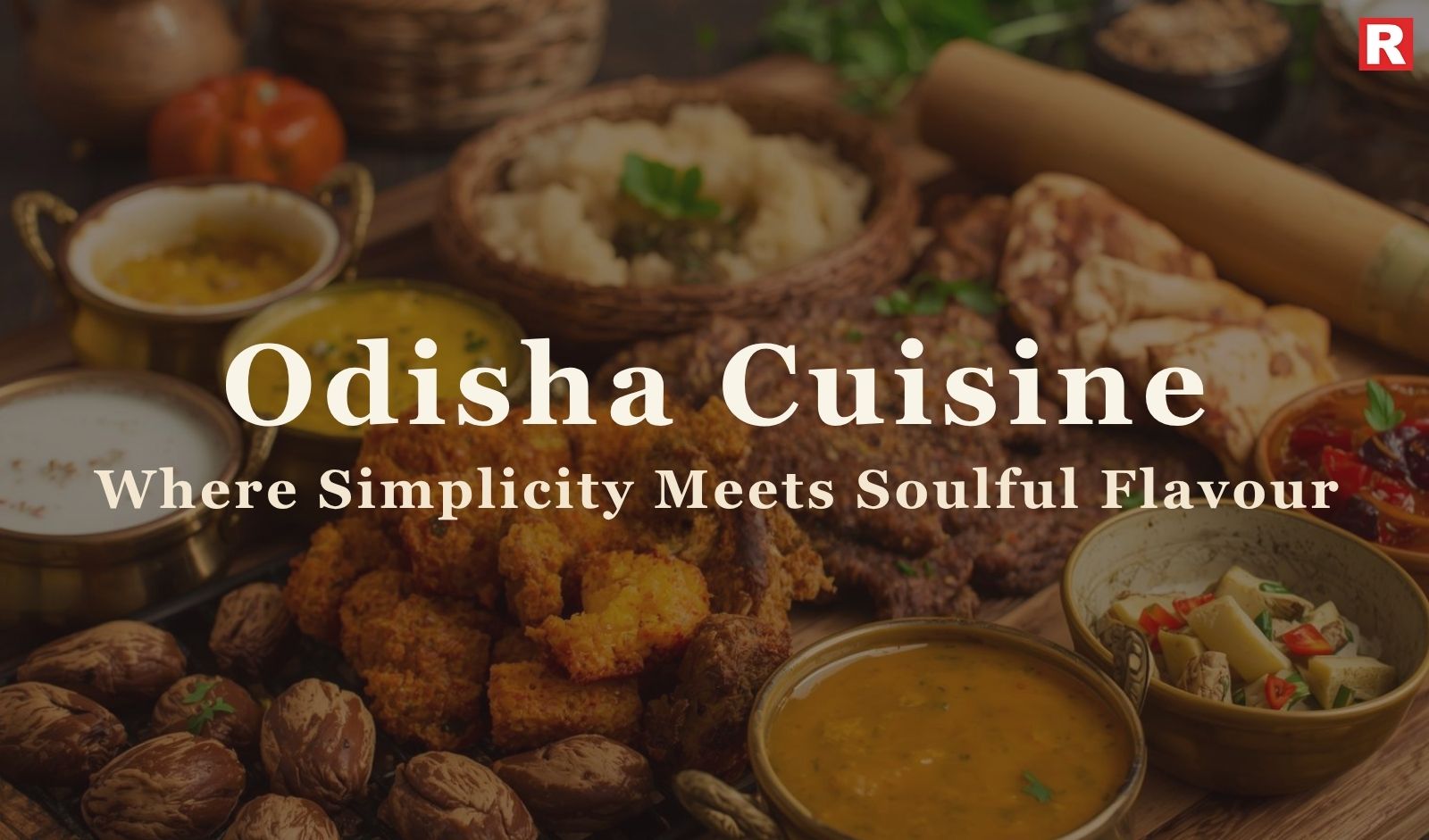
In a candid chat with Franchise India, Chef Preetam talks about the evolution of Indian food connoisseurs, next big trend in the restaurant industry and his duty as a head chef at the restaurant.
Please tell us something about evolution of Indian food connoisseurs?
The Indian cuisine is almost as diverse as the entire European cuisine, because of the four different main regional styles: the North Indian cuisine (the regions Benaras, Kashmir, Mughlai, Punjab and Rajasthan), the South Indian cuisine (regions Andhra, Kannada, Kerala and Tamil), East Indian cuisine (regions Assamese and Bengali) and Western Indian cuisine (regions Gujarat, Maharashtrian and Malwani). The northern part of India is mostly rural, although it contains large cities such as Delhi and Calcutta, thus its cuisine is more agricultural than anything, wheat being a primary constituent of this region’s dishes. Southern regions however trend to be more exotic, spicier in their dishes and rice is a constant ingredient in their food. To give the taste of their main dishes, North Indians use onions and coriander whilst southerners use a more exotic coconut base for their dishes.
What according to you is the next big trend in the restaurant industry?
Next big trend in the restaurant industry could be the food court where people can get the all the cuisines easily under a single roof.
Your expertise includes Italian, Kababs and Mexican cuisines. Which among these is most preferred by the customers and which one is your favourite?
Most people prefer Italian food in comparison of kababs and Mexican cuisines; even I am also very fond of Italian cuisine.
What made you choose a career in hospitality industry? Who was your inspiration?
Cooking was my hobby when I was in school; I used to watch the show of Chef Rakesh Sethi and Chef Sanjeev Kapoor to know something new and creative from them. These two celebrities were my inspiration.
We see lots of foreign food chains coming to India. What is the reason?
Yes, a lot of foreign food chains are coming to Indian market to develop their business and to get the idea of Indian restaurant industry and to know more about Indian cuisine so that they can also easily prepare Indian food and keep the Indian dishes in the menu accordingly.
How challenging is your role as the head chef at the restaurant?
Being the head chef at the Lounge, I have to maintain the quality of food and the standard, correct portion size to be delivered to the guest, so that we can make the guest happy and satisfied, as you know “one satisfied customer brings you hundred more”.
What offers is your restaurant planning on Diwali?
We are not offering anything on diwali but we are celebrating “cheesy chicken & beer festival” which will start from 16th October to 2nd November. We are doing beer competition from 21st October to 24th October which would be a fun for beers lover, we are making gift hampers for diwali special offers and discount. We keep on trying the new things as the industry needs.
Tell us something about menu designing in a restaurant? What are you doing at your restaurant to go delicious by design?
We keep “special of the day” everyday in the menu, so that guests get to know what special we are offering apart from the ‘a la carte menu’, and to design the menu we always keep the nutritious and healthy food in the chart and of course it should be according to the need of the restaurant.
How to maintain value and position within the market place?
To maintain the value and position within the market you have to maintain good standard, you should not compromise with your quality, should keep the things right and according to the needs and demand of the guest. If you follow these, you will automatically start rising and people will also appreciate you.
How has been the journey working as a kitchen trainee with TAJ President, Mumbai till now?
I started my carrier as a kitchen trainee with Taj President, Mumbai. I must say it was not a cake walk. I remember I used to work 20 hours a day. But then I realise if you are working to learn something then you have to be strong enough, I worked for Karma Restaurant in Mumbai, Olive Bar and Kitchen Delhi, Hotel Diplomat, Manree and Zest managed by DLF in a different position. I am fully satisfied with my carrier till now.

Bars and clubs are the most visited places by young people to enjoy a good night of music and drinks. It is a place that serves good food and drinks, and is the best place to let go of all problems and just enjoy the time. However, if the customers don’t even know what to order even after seeing the menu, then it is a big problem, and it can even cause a problem in the revenue of the bar. So, for the people and the bar, the need of having a good menu design that showcases all the dishes and drinks of the bar is most important.
A good menu design is easy to read, showcases all the items available in the bar, is aesthetically pleasing, and answers the customer’s queries. A menu card is not just about listing the drinks and prices; it is also about crafting a narrative, showing the customers the most popular drinks, and encouraging them to try new and profitable items.
So, in this article, we will be guiding you in creating a designer menu card by telling you about the top 5 bar menu design ideas.
Read more: Ice Cream Prices to Become Hot this Summer
1. Embrace Your Bar's Unique Personality and Theme
Your bar menu is a good opportunity to showcase your brand identity. The first idea is to add the themes of your bar to the menu card. However, before doing that, you need to know what kind of bar you are working in. What is it that makes your bar unique? What are the special drinks of your bar? Is your bar a tiki bar with a tropical theme? An elegant wine lounge? A boisterous sports bar? This theme should flow naturally into the design of your menu. Consider muted colors, vintage fonts, and possibly a "secret" area for a speakeasy. Exotic names, lively colors, and humorous illustrations are essential for a tiki bar.
Also, you need to know who your primary customers are. What kind of customers have you been serving till now? Are your customers searching for craft cocktails as young professionals? Are they casual drinkers who like to drink beer mostly? Create a menu that appeals to their preferences and needs. A neighborhood pub's menu might be more substantial and informal, whereas a high-end establishment's menu might be elegant and simple.
Also, create a backstory or a narrative for your bar. Like a brief history, the inspiration behind your cocktails, or your beer selection. This adds depth and personality, making the menu more engaging than a simple list.
Ensure that the fonts, colors, imagery, and overall style on your menu are consistent with your bar's logo, interior décor, website, and social media presence. Consistency builds brand recognition and trust.
Why this makes your menu pop: Customers are immediately drawn into your world by a menu that embodies your bar's distinct personality, which enhances the coherence and memorability of their experience. It draws them deeper into your brand's narrative by letting them know that they've found a location with a unique identity.
Latest: 10 Food Presentation Ideas to Make Every Plate Pop
2. Master Readability and Intuitive Organization
If a menu is beautiful but difficult to navigate, then it is useless. Therefore, make sure that your menu is user-friendly and clear. To do that, select a font that is easy on the eyes, even in the environment of the bar, which is mostly dimly lit. Decorative fonts should only be used for headings or small accents. The main description and prices should be clear. Avoid using too many different font types. It can make the menu look cluttered and amateurish. Considering the environment, the font size should be large enough for comfortable reading.
You can use a variety of font types or sizes, weights (bold/light), and even colors to create a visual hierarchy. Create specific headings and subheadings for different types of drink groups. For example, cocktails and beers are two different types of headings for a group.
Don’t add too much information on one page or in one space. It will just look jammed. Ample whitespace (negative space) makes the menu feel less overwhelming, allows the eye to rest, and helps individual items stand out. An overly filled menu feels chaotic and cheap.
Although descriptions are important, avoid verbosity. Get straight to the point, highlighting key ingredients or unique selling points.
Why this makes your menu pop: A well-structured and easily readable menu expedites ordering, eases customer annoyance, and offers a seamless, pleasurable experience. Your entire business is enhanced by this professionalism.
Read more: 6 Types of Refrigerators you need for Your Restaurant
3. Implement Strategic Menu Engineering and Pricing

Menu engineering is a strategic process of designing your menu to maximize profitability. It's about more than just aesthetics; it's about psychology. To create a menu that looks both systematic and aesthetically pleasing, first, you need to group the items.
First of all, put the high-profit, high-popularity items in prime viewing areas. High-popularity but low-profit items should be avoided in premium spots unless they serve as a hook for other items. The low-popularity but high-profit items should be considered to be made more appealing through better descriptions or strategic placement. Consider removing the low-popularity, low-profit items. This is to free up space for more profitable offerings.
Psychologically, there are certain areas of the menu that the customers tend to scan first. They are known as “Sweet spots” of the menu. For the menus with multiple panels, these spots are at the top right corner, then in the middle, and then the top left. You should place your star drinks here. For single panels, the top half or the central area can be powerful.
Strategic Pricing Presentation helps to place the items according to their price. First, don’t just align the prices in a neat column down the right side of the menu. This can encourage the customers to look for the cheapest item. Instead, place the price after the drink description, subtly next to the text. Studies have shown that people often look for the ₹ symbol first in the menu. If it is removed, customers perceive the price symbol as less significant. Consider adding a very high-priced item to the menu that you don’t have expectations of selling much. This will make the other drinks look much cheaper. Offer deals like "Cocktail of the Week + Appetizer for ₹X" to encourage higher average spending.
Why this makes your menu pop: Without making customers feel coerced, clever menu engineering gently sways their preferences toward more lucrative items. This directly maximizes your revenue.
4. Craft Enticing Descriptions and Leverage Visual Cues

You can awaken the customer’s senses by describing the experience of the drinks. So, don’t just list ingredients. Instead of "Gin & Tonic," try "Crisp gin paired with artisanal tonic, a hint of lime, and aromatic juniper berries for a refreshing lift." Use adjectives that appeal to taste, smell, and even sound (e.g., "effervescent," "velvety," "smoky," "zesty").
Make use of USP (Unique Selling Points). Like using local ingredients, home-made syrup, freshly squeezed juices, and premium spirits. Also, for premium drinks like wines or craft beers, add a brief note about the region they are imported from. Give them a theme-appropriate name that symbolizes their origin.
To make your menu look appetizing, consider adding images of your best beverages and drinks. Using high-quality, professional photographs of your signature or artistic drink can make the menu look more presentable and aesthetic. However, do not add too many photos as this can make the menu look over-cluttered. Use them to highlight just the few “star” drinks. Adding icons to the menu is also an interesting idea. This can help the customer to see some key information like “gluten or vegan free” without scanning the entire menu.
Why this makes your menu pop: The menu feels exciting and decadent thanks to clever visuals that capture the eye and arouse desire right away, as well as evocative descriptions that entice taste buds and promote exploration.
What's new: 10 Tips to choose the best Dishwasher for your restaurant
5. Consider Materials, Format, and Digital Integration

The physical form and durability of your menu contribute significantly to its overall aesthetic and perceived quality. Choose durable and high-quality materials to make the physical copy of the menu. Bars are a high-traffic area so menus are frequently handled to each other.
Material Quality: The material quality needs to be sturdy and long lasting.
- Laminated paper is affordable, reusable, and long-lasting.
- Synthetic Paper: Provides a high-end feel and is waterproof and tear-resistant.
- Wood or leather: For an upscale, elegant, or rustic look. These can be more expensive, but they feel luxurious and have great durability.
Hardcover/Bound Menus: For lengthy cocktail books or wine lists.
Format & Size: The menu ought to be manageable and comfortable to grasp.
- Single Sheet: Excellent for daily specials or more condensed, targeted lists.
- Bi-fold/tri-fold: Frequently used and adaptable.
- Booklet: Perfect for lists with a lot of options, like wine lists.
Chalkboard/Digital Boards: Digital boards or chalkboards are great for posting daily specials, happy hour offers, or quickly shifting lists of craft beers. They provide both flexibility and a contemporary or rustic look.
Digital Integration (Tablets/QR Codes):
- QR Codes: On paper menus or table tents, print a QR code that points straight to your online menu. This provides comprehensive information (such as complete ingredient lists and tasting notes), easy updates, and the potential to improve hygiene.
- Tablets: Interactive tablet menus for upscale bars can provide ordering options, thorough descriptions, and eye-catching graphics. They offer a high-end, contemporary experience despite being an investment.
Why this makes your menu pop: The physical form of the menu's tactile experience and visual presentation highlight the high caliber and meticulousness of your bar. Digital integration improves the overall experience by providing convenience and a contemporary touch.
Read more: What Is Cold Brew Coffee? Facts You Must Know
In the end
Your bar menu is a vital part of your brand's story and a dynamic sales tool that does much more than facilitate transactions. You may turn a simple list into an engaging experience for your clients by carefully implementing these five design concepts, which range from mastering readability and thoroughly comprehending the distinct personality of your bar to strategically engineering your offerings, creating captivating descriptions, and choosing the appropriate materials. A well-designed menu isn't just a benefit in the cutthroat bar industry of Faridabad, Gurgaon, and beyond; it's a necessary component for creating sustained success that makes every drink as enjoyable as the aesthetic appeal.

The world of fine dining has experienced a remarkable and exciting transformation over the last decade, blossoming into a vibrant celebration of global culinary diversity. William Drew, Director of Content for The World’s 50 Best Restaurants, highlights this inspiring shift: ‘Cultures that were previously underrepresented on the world stage, from Latin America to Asia and the Middle East, are now earning the international recognition they deserve..’ French culinary techniques, once considered the cornerstone of haute cuisine, are now beautifully enriched and elevated through flavours and inspirations borrowed from the bustling street food stalls of Bangkok, the smoky delights of Mexico City, and the fragrant spices of Beirut. ‘Today’s haute cuisine knows no boundaries… it thrives on inspiration from every corner of the globe,’ he shares enthusiastically.
REDIFINING DINING’S FUTURE
This democratization of culinary artistry is a reflection of our times—globalization, travel, and social media are stitching a community of gastronomes eager to experience traditions from afar. ‘Diners in São Paulo can marvel at what’s plated in Saigon,; Drew notes, hinting at the exhilarating shift towards a more interconnected culinary world. With the upcoming 2025 awards ceremony set to be held in Turin, Drew’s direction serves as a compass for this culinary renaissance. Yet, the evolution doesn’t stop at cultural diversity. The pressing need for sustainability is now intertwined with the ethos of high-end dining.
‘Sustainability is no longer just a buzzword or a side project for restaurants — it’s becoming their foundation,’ he explains.
The World’s 50 Best Restaurants aims to spotlight those who lead in sustainable practices, transcending mere certifications and awards to influence a holistic approach. This paradigm shift prioritizes not only the environment but also the social and humane treatment of those involved in the culinary journey—from chefs to patrons. Drew emphasizes the importance of recognizing efforts that champion respect for the planet, producers, and teams alike.
STORIES THAT CONNECT
Storytelling, a pillar of culinary identity, plays a crucial role in how restaurants and chefs are perceived globally. Drew ardently believes that every dish, every dining experience, carries a narrative.
Whether they’re literally telling the stories about their food when they serve it, or it’s a more subdued storytelling through the culinary creations … storytelling is absolutely central.” He cites Gaggan Anand from ‘Gaggan’ as an exemplary figure whose restaurant experience is theatre—a tapestry of food, art, and culture that engages diners in profound ways.
Reflecting on his own culinary journey, Drew acknowledges the earliest catalysts of his passion—the stories of his grandparents. ‘They were food adventurers, endlessly curious about restaurants,’ he begins. This curiosity was kindled during an impactful visit to Raymond Blanc’s renowned ‘Le Manoir aux Quat’Saisons,’ which awakened a deeper appreciation for food as a narrative, not just a meal. His grandfather’s inclination to meet chefs and learn their stories enriched their dining adventures, molding Drew’s perspective that food is an experience beyond taste. Today, he finds inspiration in the Roca brothers of ‘El Celler de Can Roca.’ Their unmatched talent, amplified by humility, reinforces his belief that food transcends itself; it’s ‘a story waiting to unfold.’ They are, after all, superheroes in the culinary realm, reminding all of us that behind every dish lies not just ingredients but the essence of human connection, culture, and history. With The World’s 50 Best Restaurants leading this charge, diners are invited not merely to taste but to engage—discovering a world rich with stories that enhance our collective gastronomic experience. In this ever-evolving culinary landscape, every meal comes with the promise of a narrative, waiting to be savoured.
Akanksha Dean is an independent food & travel writer, a trained chef and a catalyst and is the first Indian to have trained at Osteria Francescana, in Modena, Italy, rated as the world’s best restaurant in the World’s 50 Best Restaurants, in 2016 and 2018.

As you know that food service industry is very demanding. What you serve to customers today, may not be their desire tomorrow. With social media playing an active role and people travelling a lot, the customers seems to be more exposed in terms of food that is being served in different parts of the world.
Experience at the Forefront
“Today people have an access to real time food trends. Earlier, we could create menus that were like forever and perpetual but today it is completely different and people want things that are based on high quality ingredients, good for their health, pocket friendly and people are looking for experiences when they go out for dining,” shared Chef Abhijit Saha who was one of the first chef to introduce molecular gastronomy in India at the time when we hardly knew anything about it.
This surely mean that chefs play a very big and dynamic role in keeping up the space and demand. And, there is no mistake saying that chefs are innovators.
Transparent Ingredients
“Today’s generation especially Gen-Z look for delicious food that’s infused with a lot of experience. To make the diners a comeback customer we as a restaurant owners need to do a lot of work as it’s not just curating a menu that’s different but overall giving them an experience that keeps us ahead of our competitors. You also need to be transparent, show them the ingredient that goes into the food or if we tell them a story related to any dish or show them live kitchen concepts that has given a great result for us,” added Chef Bobby Patel, Co-founder, Thyme and Whisk, Mad Doh.
Seasonal menu also plays an important role and that’s something that makes your customer coming back. This has emerged as one of the important dining trends in all restaurants across globe.
Innovation is the Mother of all Invention
“Innovation is something that has to drive your restaurant daily. Before innovation what comes to my mind is the data which has become extremely important for all of us. Tech is driving the innovation as today we understand what is our customer base, where’s it coming from, what’s the age group, what do they like, dislike and every hotel, restaurant I think we have a different genre of customers coming in as we don’t have a similar kind of crowd. So, first of all it’s important to know who is coming to my hotel and then we need to understand what innovation needs to apply to each one of them,” added Chef Nishesh Seth, Executive Chef, Shangri-La Bangalore.
Building a Connect
Diners are craving deeper connections to their meals. It’s no longer just about flavor — it’s about the stories behind the food.
“Today’s diner doesn’t come to a restaurant just to dine. They are much more aware and they exactly know what they are expecting out of the restaurant. It’s always about staying ahead of the game. Leela as a brand is pure Indian luxury. For us innovation is not about finding something new and innovate but it’s about our whole culture,” mentioned Chef Rajesh Roy, Executive Chef at The Leela Bhartiya City Bangalore.
Great Food to Go
India has got a very rich heritage and food culture. And, for these chefs innovation starts from sourcing to the plating and that has become the specialisation.
“You need to give your team a free hand to do mistakes. We being an FMCG company work with restaurants and hotels to get the best innovation. You have to have an open mind set, travel a lot, and know what’s trending as people are not just limited to chole bhature or pav bhaji,” explained Chef Ritik Mathur, Corporate Chef, Cremica Food Industries Ltd.
Hence, we can say that people when go out these days to a place are looking for an experiential dining and just a fancy food being served on the table.

Seasonal menu not just add creativity and freshness in the menu but also is a big time money saver for restaurants. It also allow restaurants to take advantage of the freshest ingredients at their highest quality. Ingredients that are in season are usually less expensive because they are more abundant and travels shorter distances to reach the restaurant, cutting all the in-between cost attached to its supply. Moreover, seasonal dishes build a sense of novelty that would entice diners to return to the restaurant to try something new.
Why so Important?
“Curating a seasonal menu is important because it maximises ingredient freshness and flavour, supports local farmers, reduces environmental impact through lower transportation needs and aligns with our guest preferences for sustainable, high-quality dining. It also allows my team and me to showcase creativity by adapting to available produce, keeping the menu dynamic and engaging,” shared Chef Anurag Bainola, Executive Chef La Estoria, Goa IHCL SeleQtions.
Seasonal menus are very important tools to help restaurant and chef brands to stay innovative and ahead of the curve.
“Having light menus which rotate, especially seasonally can help Restaurants stay more relevant to consumers, who will always have an opportunity, beating the “menu fatigue” which happens in favorite restaurants, where regular loyal customers sometimes choose another place because they are craving something new,” Pranav Rungta, Co-Founder & Director, Nksha Restaurant.
It is also believed that creating a seasonal menu always brings multiple benefits that include supporting local farmers and contributing to the local economy, it also helps chefs manage food costs as seasonal ingredients are available in good quantities and at a lower price.
“Seasonal menus allow us to stay rooted in freshness, support the local community, and bring exciting new flavours to the guest's plate — all while managing efficiency in the kitchen. It’s a win-win for the team and the diner,” he added
Seasonal Menu Boost Sales
A seasonal menu boosts sales by attracting customers with fresh, high-quality ingredients that appeal to their desire for flavor and novelty. It creates buzz through limited-time offerings, encouraging repeat visits.
Not only this, the dynamic menu keeps the dining experience exciting, driving demand and differentiating the restaurant from competitors. Going a step further by pairing drinks with the menu, the restaurant enhances dining experience and encourage diners to try new beverages, and boost sales through upsell opportunities like wine pairings or signature cocktails.
“Launching a summer menu offers key business advantages—it helps attract more customers, increases average spend with refreshing seasonal dishes and drinks, and creates buzz through social media and marketing campaigns. Limited-time offerings drive urgency and repeat visits, while the use of fresh, in-season produce keeps food costs in check. Overall, it positions the brand as innovative and in tune with customer preferences,” pointed Kanishka Tuteja of Nukkad Café, Kipos and Nest by 1Oak.
According to data, usually, about 25% to 40% of a restaurant’s menu is curated specifically for summer. Depending on the concept, some restaurants may go up to 50%-60% for a full summer-themed menu, while others might keep it subtle with 15–20%, just adding a few limited-time specials to complement the core offerings.
“Generally there is a 5-10% upswing in sales, primarily because seasonal menus are shorter. These generally help in leaner months too (Eg summer, monsoon) where there is a traditional dip,” added Rungta.
Pairing it with the Right Drink
“By considering complementary flavors, textures, and the overall dining experience. We at La Estoria approach it through flavour alignment, by adding seasonal ingredients in drinks, local and regional pairings, guests' trends and preferences, tasting and collaborations. Most important is to understand the Weight and Intensity of the dishes or the beverages that I am set out to pair: The weight of the dish guides the drink choice. Light dishes (e.g., spring asparagus) pair with lighter drinks like rosé or pilsner, while heavier dishes (e.g., winter braised meats) suit robust options like red wine or whiskey-based cocktails,” Chef Bainola further commented.
Not just that, chefs also pair dishes and drinks based on shared seasonal ingredients — like a summer salad with a cucumber-based drink or cold cucumber soup.
“Season play a vital role in curating any cuisine, dish or even the smallest of the habits. Seasons are the reason traditions are made and with time they become classics,” mentioned Chef Pradeep Rao by adding that Local & Seasonal ingredients like; Mango, Kokum, Cucumber, Watermelon, Raw Jackfruit, Bhindi, Vaal and drinks like Aam Panna, Matha and Sol Kadhi are great drink to go with seasonal, traditional menu.

The farm-to-table movement has gained immense popularity in recent years, driven by growing consumer demand for fresh, organic, and sustainable food options. Restaurants worldwide are now taking this concept a step further by introducing hyper-local menus that focus on sourcing ingredients from local farms, urban gardens, and even their own backyard gardens. This trend is reshaping the dining experience, offering fresher meals while fostering local economies and reducing environmental impact.
The Rise of Hyper-Local Menus
As consumers become more conscious of where their food comes from, hyper-local menus are emerging as a key differentiator in the restaurant industry. Chefs and restaurateurs are forging direct partnerships with local farmers, fishers, and artisanal producers to curate menus that change with the seasons and reflect the region’s natural bounty.
Hyper-local sourcing is not just about freshness; it also aligns with sustainability goals by reducing carbon footprints associated with long-distance food transportation. Locally sourced ingredients spend less time in transit, leading to reduced spoilage, better nutrition retention, and ultimately, a superior dining experience.
Benefits of Hyper-Local Menus
Unmatched Freshness and Flavor: One of the biggest advantages of hyper-local sourcing is the freshness of ingredients. Fruits and vegetables are often harvested just hours before they reach the kitchen, ensuring peak flavor and nutritional value. This also allows chefs to experiment with heirloom varieties and lesser-known local produce that might not be available through conventional supply chains.
Stronger Community Connections: Restaurants that prioritize hyper-local menus build stronger relationships with local farmers and food producers. This fosters a sense of community and mutual support, as restaurants provide a stable market for farmers while gaining access to exclusive, high-quality ingredients. In some cases, restaurants even establish partnerships with community-supported agriculture (CSA) programs, further strengthening local ties.
Sustainability and Reduced Waste: Sourcing food locally means significantly lower transportation emissions and packaging waste. Additionally, many hyper-local restaurants embrace a nose-to-tail or root-to-stem approach, ensuring minimal waste by using every part of an ingredient. This philosophy supports sustainability and helps reduce overall food costs.
Customization and Seasonal Variety: A hyper-local menu thrives on seasonality, which means customers get a constantly evolving dining experience. Menus adapt to what is available locally at any given time, encouraging chefs to be creative and dynamic. This keeps diners engaged and coming back to try new seasonal offerings.
Challenges in Implementing Hyper-Local Menus
Despite the many benefits, shifting to a hyper-local menu model is not without its challenges. One of the primary hurdles is ensuring consistent supply. Small local farms may struggle to meet the high demand of busy restaurants, especially during off-seasons or in regions with extreme climate conditions.
Additionally, pricing can be a concern. While hyper-local ingredients are often superior in quality, they can be more expensive than mass-produced alternatives. Restaurants need to strike a balance between maintaining fair prices for consumers and supporting local growers.
Logistics also play a role. Unlike conventional suppliers that deliver in bulk, hyper-local sourcing may require multiple small-scale transactions, which can be time-consuming for restaurant management.
Success Stories and Innovative Approaches
Many restaurants are finding innovative ways to make hyper-local sourcing work effectively. Some have started their own rooftop or backyard gardens to grow herbs, vegetables, and even edible flowers. Others collaborate with urban farming initiatives and hydroponic projects to secure fresh produce year-round.
For instance, Blue Hill at Stone Barns in New York has gained worldwide recognition for its farm-to-table philosophy, with most of its ingredients coming from its own farm. Similarly, Noma in Denmark has revolutionized hyper-local dining by foraging local forests for ingredients and sourcing from regional farmers.
Food halls and pop-up dining experiences are also embracing hyper-local sourcing. Many feature vendors who work directly with nearby farms and bakeries, creating a culinary ecosystem centered on freshness and sustainability.
The Future of Hyper-Local Menus
As more consumers embrace conscious dining choices, the hyper-local trend is likely to grow. Advances in indoor farming, hydroponics, and aquaponics will make it easier for restaurants to secure fresh produce year-round, regardless of climate limitations. Furthermore, the rise of digital platforms connecting farmers with chefs will streamline sourcing, making hyper-local menus more accessible.
The farm-to-table movement has evolved into a dynamic force reshaping how we experience food. Hyper-local menus offer a sustainable, flavorful, and community-driven approach to dining, proving that fresh and locally sourced ingredients are more than just a trend—they are the future of food. As more restaurants adopt this philosophy, diners can expect a more personalized and environmentally friendly culinary journey.

Hailing from Muzaffarpur, Bihar, Chef Rahul Shrivastava's culinary voyage from his roots to the kitchens of Hyatt Centric Juhu, Mumbai, epitomises the transformative power of determination and passion. Armed with zeal and a degree from IHM Hyderabad, Chef Rahul embarked on his culinary expedition by starting his internship at the esteemed 360° at Oberoi Hotels, New Delhi. His journey took him to various destinations, from opening his inaugural restaurant at The Park Chennai’s A2, to ventures like Amami in Malta, Izumi in Mumbai, and eventually returning to his roots with Soy-Soi in Delhi.
With each experience, Chef Rahul's culinary finesse flourished, culminating in his illustrious role at Hyatt Centric Juhu. Here, he orchestrates a symphony of flavours that tantalise the palate and linger in memory. Beyond mere recipes, Chef Rahul crafts narratives on plates, curating a 'Theatre of Flavours' where every dish narrates a story.
In an exclusive interview with Restaurant India, Chef Rahul discusses about the on-going food trends, role of food plating and presentation, his journey and much more. Excerpts:
What are on-going food trends or in-hotel trends we can look for in 2025?
2023 and 2024 was more about millets. And these days, many are focused on plant based protein and how there can be shift between normal and plant based protein. There will be an increase in the vegetarian dining and zero-waste cooking. In 2025, there will be an alternative protein source like lab-grown meat. We make a dish from vegetable leftovers which are called ‘Mala Xiang Tao’ and it is made of roots and stems of vegetables. We toss it with Chinese flavours. There will be lots of fusions; shift from modern fusion, people will be back to basics. Influence of AI in restaurants will be there in a unique way like AI-based menu, the calculation of nutrition value.
How has been your journey so far from working with various brands?
In Oberoi, I learned a lot as they are known for their food and service. Oberoi had a saying, “Don’t compromise over the quality of the service or the quality of the food.’’ I learned from Oberoi Hotel and The Park a lot and that’s the learning I implemented on my food at Izumi and Soy Soi. So, I handle Hyatt Centric Juhu as a whole where we have Sesame and Sesame Bar, banquets and rooftop. Every restaurant has its own learning with helps in growing further in our career.
How often do you work with kitchen team on menu innovations?
We do innovate the dishes. Junior staff showcases their skills and prepare their specials. First, they do the trial and we check usually, then we serve them to the customers. If the feedback is good, then we do promotional menu or that dish stays in the menu. In this way, we are motivating our staff to showcase the skills as well.
How do you handle conflict in the kitchen or how do you retain your staffs?
Everyone wants growth in their respective fields. We give staffs to go through development programs. Staffs should feel invested and important in every part of the team. When you get to learn you won’t leave as one feel curious to learn more.
How do you control the quality and consistency of dishes to ensure customer satisfaction?
We make sure the taste and consistency of the dishes are same. The ingredients which we use have top-notch quality.
What’s your approach on food plating and presentation?
We keep it simple and it should not be repetitive. People eat food with their eyes first. Plating has to be simple and attractive. We believe that the plating should be in a way wherein the ingredients we use for plating should be used in the dish as well.
Do you source the ingredients or make in-house spices in the kitchen?
We make the sauces in-house for Sesame. We use to source Miso paste from Japan. These days, there is a vendor who makes Miso paste in Allahabad with same quality, so we started using that one as the taste is same. The Sushi rice we used earlier use to come from US or Japan. There is a rice brand that makes similar sushi rice in India. The brand name is ‘Tanifuji’ and its one of the best quality sushi rice. We get Tuna from Japan. We use so many ingredients which we source internationally.
What are the three kitchen tools you can’t live without?
Kitchen knives, wok and thong.

In recent years, how we view restaurant menus in India has undergone a significant shift. What was once a physical booklet handed out by waitstaff is now often accessed digitally through QR codes and apps. While the COVID-19 pandemic accelerated this change, it has proven to be more than just a temporary solution. As restaurants and diners alike embrace the convenience and efficiency of digital menus, it’s clear that this transformation is here to stay.
In urban hubs like Delhi, Mumbai, and Bangalore, where technology adoption is swift, QR codes have almost entirely replaced physical menus. Restaurants have even integrated QR codes into their dining experience, allowing customers to not only view the menu but also place orders directly from their phones. This seamless process reduces wait times and enhances the overall dining experience, catering to a tech-savvy clientele that values efficiency.
While QR codes are revolutionizing the way we view menus, restaurant-specific apps are taking things a step further. Apps like Zomato and Swiggy, which initially started as food delivery platforms, now offer dine-in services, allowing users to browse menus, place orders, and even pay through the app. This integration of services under one digital roof is particularly appealing in a country where convenience and speed are paramount. Some apps also integrate loyalty programs within these apps and this is a level of personalization that physical menus simply cannot offer. It’s a small touch, but it makes a big difference in a competitive market where customer retention is key.
The digital transformation of menus is not just about technology; it’s about enhancing the customer experience. For consumers, especially the younger demographic, the ability to browse through an extensive menu at their own pace, without feeling pressured by a waiter standing by, is a significant advantage. This digital autonomy allows diners to make informed choices, often leading to higher satisfaction and, in many cases, increased spending.
Moreover, digital menus can be updated in real-time, reflecting seasonal changes, availability of ingredients, or special promotions instantly. Several restaurants have leveraged this feature to keep their offerings fresh and exciting. Furthermore, digital menus allow restaurants to experiment with pricing and promotions more dynamically, by introducing limited-time offers that are immediately reflected on their digital menu. This kind of flexibility is harder to achieve with physical menus, which require time and money to update.
In addition to this, digital menus are also more eco-friendly as compared to traditional paper menus. By reducing paper usage, restaurants are not only cutting down on waste but also saving on the costs associated with printing and reprinting menus. This is particularly beneficial for smaller establishments, where every rupee counts.
While the benefits of digital menus are clear, their adoption is not without challenges. For many diners, especially older generations or those in rural areas, the shift from physical to digital menus can be intimidating. There’s also the issue of smartphone penetration and internet connectivity, which, although rapidly improving, is still inconsistent in certain parts of the country. Restaurants are addressing these challenges through hybrid models, offering both digital and physical menus, or by providing staff assistance to help less tech-savvy customers navigate the digital interface. This approach ensures that no customer feels left out in the transition, making the dining experience inclusive for all.
The shift from physical to digital menus is not just a passing trend. As India continues to digitize at an unprecedented pace, the digital transformation of menus is likely to become more widespread. The convenience, efficiency, and cost-effectiveness of QR codes and apps make them an attractive option for both restaurants and diners. QR codes and apps have proven their worth in enhancing customer experience, promoting sustainability, and providing restaurants with the flexibility they need to thrive in a competitive market.

Restaurant business is a thriving, dynamic sector in India that reflects the nation's varied culinary traditions and cuisine. India offers a vast variety of dining experiences, from inexpensive street food vendors to upscale fine dining venues, thanks to its diverse regional cuisines.
Rise of QR-Based Menu
The restaurant business witnessed a significant paradigm shift during the pandemic, moving from traditional menu cards to QR Code menus. Eateries use QR codes instead of paper menus; making it a permanent development in the sector. Diners are directed to a website from which they may view the menu after scanning the code with their smartphone. Some eateries will go one step further and offer a completely contactless ordering experience by enabling customers to place their orders online. It's not always simple to adjust to change, particularly in the restaurant business. But since it might boost revenue and guarantee long-term success, it might be advantageous to do so. Using QR codes at restaurants is an excellent place to start.
Tweaking the Physical Menu Card
Many restaurants also have innovative menu options during various festivals. The menu card is decided based on the popularity of the dish during the festive seasons. With the increase of social media, people are more inclined towards trying new food and beverages. The food influencer’s also promote various food in an around social media creating the hype among the consumers. A lot of eateries will frequently change their menus. Using physical menus can make this challenging. However, businesses can personalize their menus, add highlighted items, and change out-of-stock items as much as they'd like when using a virtual menu.
The videos and drool-worthy photos of food influence various social media users to try the delicious food by visiting the restaurants or placing an online order from those restaurants.
What’s pushing this Trend
Awareness on Social Platforms: Social media has significantly altered the restaurant industry because customers are always seeking for new experiences, trends as they are now well aware about what’s happening in the globe. “The eateries' reach has expanded concurrently as a result of their increasing presence on social media. The level of innovation to keep the audience interested is unprecedented. Menu accessibility and the inexpensive menu modifications made possible by QR codes have revolutionized the industry,” said Akansha Saigal, Executive Chef, Tattva Bar and Café, Mumbai who highlighted that being low maintenance also give an added wow factor for the guest and are simple to modify with fresh seasonal menus and food photos.
Seamless Ordering: Innovation isn’t a trend, its survival. But how we innovate in F&B has changed over the years. Today’s audiences are well travelled, curious, need clear and quick communication, and are tech savvy; so how do we apply that to menus?
“Across the world seamless ordering via apps or a QR code menu is being used much more often, and restaurants are incorporating this technology. But make sure that you have enough ‘instagramable’ dishes on the menu, as diners crave the experience factor. Who knew that if you set your butter chicken on fire it would spark off social media frenzy, and before you know it, everyone wants to try it! Last of all, eat outside of the box,” commented Siddharth Mathur, Founder & Director, Secret Ingredient.
Seeking Unique Flavours: Millennials often seek out unique flavor combinations, and trends like plant-based options or international cuisines. Menus that offer nutritious and health-conscious options, such as low-calorie, gluten-free, or high-protein dishes. Authenticity genuine storytelling about the origin of ingredients or the inspiration behind dishes can create a deeper connection.“With the power of social media and influencer marketing, people are aware of the new innovative menus in restaurants during festivities or food festivals etc. Influencers and food bloggers can showcase new menu items through engaging content, such as photos, videos, and reviews, reaching their followers and beyond. Influencers often share their genuine experiences, which can build trust and excitement around a new menu or festivals,” explained Chef Anit Saklani, Executive Assistant Manager, The Fern Brentwood, Mussorie.
Engaging dining experiences: Restaurants are capturing Millennials’ attention by offering unique, customizable menu options and incorporating international flavors to make dishes more captivating and memorable. “By emphasizing local ingredients, eateries can also make a significant impact. Millennials seek dining experiences that go beyond the ordinary, valuing creativity and individuality in their meals. The appeal lies in providing something extraordinary and personalized, whether through authentic flavors, visual presentation, or a connection to local sourcing,” elaborated Chef Dheeraj Mathur, Cluster Executive Chef, Radisson Blu, Kaushambi, Delhi NCR who summed up by saying that millennials are drawn to menus that present not just food, but a distinctive and engaging dining experience that stands out from the usual cuisine.

There is a noticeable trend towards premiumisation among Indian consumers across various product and service categories. This shift is characterised by an increasing preference for high-quality, feature-rich products and experiences while a willingness to spend more on items that offer perceived value and enhanced experiences.
Taking cues from few of the sectors, in the technology and electronics sector, the average selling price of smartphones in India has seen a significant rise, indicating a shift towards more premium models. In fashion and personal care, there is a growing demand for premium and luxury fashion items. Brands like Bata India have reported higher sales for their premium lines, such as Hush Puppies, compared to their lower-priced offerings. Major retailers are adapting to this shift by expanding their premium offerings and enhancing the shopping experience. For instance, Reliance Retail caters to both value-conscious and premium-seeking consumers through different store formats like Freshpik and Smart Bazaar.
The rise of e-commerce and digital marketing has facilitated the accessibility of premium products to a broader audience, including those in smaller towns and cities. This digital expansion has played a significant role in driving the premiumisation trend in India
The ever evolving food and beverage industry is also experiencing premiumisation, with consumers showing a preference for products made with higher quality ingredients and better manufacturing standards. This includes gourmet foods and premium alcoholic beverages. Not just that, in hospitality and restaurants, travellers are increasingly opting for luxurious suites and verdant rooms, signifying a distinct departure from previous trends and heralding a new era in the Indian hospitality sector, where indulgence is the norm. And for restaurants, consumers are moving towards more premium set ups, for that matter even opting for ordering from a premium cloud kitchen brand.
Existence and Evolution
Premiumisation in the restaurant industry is a burgeoning trend in India, similar to what has been observed in the hotel sector. This trend is driven by several factors. The rise in disposable incomes among the middle and upper classes has led to a greater willingness to spend on dining experiences.
“While premiumisation trends are manifesting across industries, there are innovations in food and beverage, fashion, and travel, setting lower barriers of entry to premium experiences. The tension between desires to spend, along with financial concern, is breeding new opportunities in premiumisation across industries, which is reflected in the anticipated growth in premiumisation as a trend. Even in snacks, people tend to get attracted to ingredients like caviar or truffle, this shows an inclination towards being ready to pay more and considering few lifestyle additions as a social status,” Mihir Kukreja, manager at Copper Leafs in Goa commented.
Urbanisation has further introduced new lifestyles and preferences, with urban dwellers seeking novel and sophisticated dining experiences. Similarly, increased exposure to global cuisines through travel, media, and the internet has cultivated a taste for premium dining options. A growing awareness about health, nutrition, and food quality has also led consumers to prefer restaurants that offer superior ingredients and dining experiences. The influence of social media and the culture of sharing dining experiences online have also contributed to the demand for aesthetically pleasing and unique dining experiences.
Balancing Premium and Affordable
There is a noticeable trend that the inclination towards premium products, affordability remains a crucial factor for many consumers. F&B companies are innovating to strike a balance between quality and cost. By using alternative ingredients that mimic the quality of more expensive components, manufacturers can offer premium products at more accessible prices. This approach allows consumers to enjoy high-quality food and beverages without significantly straining their budgets.
“One common misconception about premiumization is the sole association with high prices or extravagant packaging. In reality, premiumization is fundamentally about delivering enhanced value, which encompasses various aspects beyond pricing and outward appearance. Another misconception is the assumption that only niche or luxury products can be premiumized, overlooking the potential for mainstream products to integrate premiumization strategies authentically and effectively. In the Indian region, premiumization extends beyond product features to encompass experiential dining, innovative fusion cuisines, and unique flavour combinations, catering to the diverse and evolving tastes of consumers in this dynamic market,” Vineet Arora, F&B marketing strategist at JJ Bakers commented.
The dining out culture in India is also evolving, with a growing preference for experiential dining. Consumers are increasingly seeking restaurants that offer more than just good food; they want an ambiance and overall experience that justifies the premium prices. Fine dining establishments that focus on exceptional service, unique menu offerings, and memorable atmospheres are thriving. This trend highlights a shift towards valuing the overall dining experience, rather than just the food itself.
The premiumisation trend is equally pronounced in the beverage sector. The craft beer and spirits market is thriving, with consumers showing a growing willingness to pay more for high-quality, artisanal drinks. This shift is not limited to alcoholic beverages; premium non-alcoholic drinks featuring authentic, low-sugar, and functional ingredients are also on the rise. The emphasis on health and wellness is driving demand for beverages that not only taste good but also offer nutritional benefits.
“60% of on-premise visitors say they are likely to pay more for what they perceive as a better-quality drink. Being able to offer premium drinks with premium ingredients at your venue, isn’t necessarily anything new for your guests. What is new is how your guest will get to know they are available. Whether they are found on your menus (physical or digital) or displayed on POS throughout the venue, there needs to be something that draws your guest into a premium experience. In top performing venues, the featured product can generate up to 10% of total revenue,” Avinash Vupala,MD and owner of The Pablo's Club in Hyderabad mentioned.
Advantage to the Business
Premium pricing allows restaurants to achieve higher profit margins compared to economical dining options. By offering a premium experience, restaurants can differentiate themselves from competitors, creating a unique market position. This approach tends to attract a loyal customer base willing to pay more for consistent quality and exclusivity. Additionally, premium restaurants often gain a reputation for excellence, attracting more customers and elevating the overall brand image. To justify premium pricing, these establishments often innovate in menu offerings, ambiance, and service, leading to creative and unique dining experiences that draw in customers. Premium restaurants can also introduce additional revenue streams through exclusive events, private dining options, and branded merchandise, enhancing their profitability.

In the busy lanes of Covolasium Goa, three brothers running their food van was surrounded by customers. While one brother took orders, another was busy cutting and chopping ingredients, and the third was preparing the beloved local dish, Chicken Cafferel. The food truck's menu featured only two items: Chicken Cafferel and Gobi Manchurian, intriguingly listed as "Gobi Fry Chilli." When inquired about the unique naming of the dish, the owner responded with a smile, explaining it was a creative workaround to local regulations prohibiting the sale of "Gobi Manchurian" in Goa.
It's surprising how the simple dish Gobi Manchurian has sparked controversy significant enough to capture national headlines. This Indo-Chinese fusion dish has become the center of debate in Goa, with several municipal corporations prohibiting its sale. The situation has escalated to the point where Gobi Manchurian has become a contentious issue for Goan authorities. Initially celebrated for its popularity, the proliferation of Gobi Manchurian stalls, especially in coastal regions, has recently been viewed with concern.
“Its not just we who have changed the name, most of the vendors and restaurant owners specially in Mapusa region have changed the name of the dish and selling it. See, there is customer demand, people like eating it so would would we get impacted. I respect my local cuisine and i also celebrate the cuisines worldwide,” Jacob Noronha, one of the three brothers running the food van commented.
In Mapusa, Goa, the municipal council took a firm stance by banning the sale of Gobi Manchurian at road-side stalls and during festivals, marking a significant moment in what has been an ongoing culinary dispute since 2022. This decision followed a call for a ban by Mapusa councillor Tarak Arolkar during a local festival in January, a move quickly endorsed by other council members.
The ban comes amid unspecified health concerns, including allegations of using synthetic colors and lacking hygiene in its preparation. In 2023, actions were taken against six vendors in Ponda for unhygienic practices, and similar measures were implemented in Bicholim ahead of religious festivities.
The ban has ignited discussions on social media and among the public, questioning the rationale behind the administration's decision. Mapusa's municipal council has cited health complaints related to the dish's preparation as the primary reason for their intervention.
“The targeted prohibition initiates a wider conversation on the intersection of food culture and politics. In a country where vegetarianism is intricately linked with cultural and religious traditions, the specific restriction of a well-liked vegetarian dish may lead to unforeseen social and cultural consequences. It encourages contemplation on how dietary preferences and prohibitions can mirror and influence the intricate fabric of Indian society, where culinary choices often echo broader cultural, religious, and socio-economic factors. This culinary dilemma acts as a miniature representation of the broader, sometimes complex relationship between India and China,” Puja Khilnani, Founder of Elephant Beach Cafe in Anjuna commented.
The controversy also touches on cultural and authenticity debates within Goa. Some argue that the dish's popularity, particularly among vegetarian tourists, does not pose a hygiene risk. However, concerns persist that the proliferation of non-local food stalls could dilute Goan culture. This sentiment is part of a broader discussion on preserving Goan culinary traditions amid a shift towards accommodating diverse palates, highlighted by a recent mandate for beach shacks to serve traditional Goan meals.
"It's conceivable that local vendors in Goa may have felt a threat to their customer base when a few introduced a unique dish. In Goa, the consumption of paneer is relatively low, so for vegetarians, the closest alternative to dishes like chilli chicken and chilli prawns was gobi Manchurian. Interestingly, when tourists visit Goa from various places, they easily identify with gobi Manchurian if they're not seafood enthusiasts. I've never witnessed any business loss due to its inclusion on the menu," stated David Lobo, a business owner of StarFish, a casual dining restaurant and bar in the South Goa Colva region.
This is not the first instance of Gobi Manchurian facing scrutiny in Goa. In 2022, the state's Food and Drugs Administration issued guidelines limiting the sale of the dish during a temple fair in South Goa, underscoring ongoing apprehensions regarding food safety and cultural preservation.
The dish's origins add another layer to the debate. Often considered Chinese cuisine in India, Gobi Manchurian is, in fact, an Indian invention, with little to no recognition in actual Chinese culinary practices. This revelation underscores the complexity of cultural exchange and adaptation, as Indian 'Chinese' food, or 'Chinjabi,' blends elements from various regional cuisines, creating a uniquely Indian dining experience that continues to evolve and spark conversation.
Gobi Manchurian, the vegetarian counterpart of chicken Manchurian, is believed to have originated from the creative mind of Nelson Wang, an Indian restaurateur with Chinese heritage, in Mumbai during the 1970s. This dish epitomizes fusion cuisine at its finest. Combining the quintessential Indian aromatics of garlic, ginger, and onion with the kick of fresh green chilies and the savory tang of soy sauce, it represents a harmonious blend of flavors and cultures.
While causing quite a stir in Goa and its neighboring Karnataka regions, the innocent Gobi Manchurian continues to be a beloved dish throughout India. But who knew food could be such a troublemaker, right?

F&B consultant & International Culinary Expert Dec 24, 2020 / 8 MIN READ
With F&B being one of the hardest hit industries of the pandemic, we can begin looking ahead at 2021 and the dining trends that can pave the road to recovery.
While regulations and restrictions for in-house dining throughout pan-India are mandated by individual States and municipalities, we are seeing consistent adaptations in restaurants. This includes digital menus and payments, socially distanced tables, limited capacity, employee testing and hyper focused hygiene. With these 'new normals' becoming the standard for current and post-pandemic operations, we can begin looking ahead at 2021 and the new dining trends to excite customers and generate revenue.
Also Read: Restaurants Unlock 2020
Elevated Takeout Experiences: The demand of takeout and delivery will continue to rise as many customers will prefer to stay at home. After 9 months of delivery being served in traditional to-go containers, 86% of people are willing to spend more for an outstanding customer experience. This premium can range from 13%-18% increase on ticket prices and higher for unique offerings. Worldwide, restaurants are offering unique concepts that create the dining experience at home. In Los Angeles, Asian style soup 'hot pots' are trending because they are packaged with their own pot and gas burner for the restaurant experience. In Spain, the traditional dish paella arrives for takeout and delivery in a pizza box. When it's opened, the dish is presented in the aluminum pan customers can keep and reuse. In SE Asia, popular Korean BBQ arrives with a one-time use indoor grill so customers can enjoy the experience of grilling meat at home. With India being home to over 35 regional cuisines, there are unique opportunities to include creative packaging such as reusable claypots, thalis' and roti boxes. These additional costs are passed on to the customer which they are more than excited to pay for.
Special Occasions with group private dining: Analysis shows customers returning to restaurants for the opportunity to gather with close friends and family compared to a spontaneous meal out. This is ideal for restaurants having shifted their dining room layout to accommodate fewer customers. Open spaces offer the ability to create larger dining areas for big groups that can be separated from individual customers. Restaurants can use this trend to their advantage as large groups generate higher tickets and longer blocks of usage which reduces the frequency of disinfection between groups.
Social media worthy menus: Social media intersects two 2021 dining trends in one: boredom and FOMO. First, customers are increasingly bored of eating the same meals and are looking for something different - especially when venturing outside of their homes to eat. Social media is still the #1 advertising tools for F&B in India, so make sure it's used to your advantage by offering dishes that give prospective customers visuals they can't wait to try and post on their social channels. Secondly, people want to try the places their friends validate with posts on social media and the dishes they sampled. Simple adjustments to the existing menu make this easy. Add a dessert served with flambé or dry ice which makes for amazing social media content. For savory dishes, incorporating table-side smoke when items are served provides that 'awe' factor that customers love to document, which in-return offers endless free advertising and testimonials.
May Interest: 5 restaurant trends that are going to stay in 2021
Wellness inspired: Returning back to why F&B suffered in 2020 and what is required to bring back the industry in 2021 is the customers health. Trends demonstrate they are more hyper-focused than ever on boosting their immunity and shedding weight gained during lockdown. Simultaneously, trends show that customers plan to indulge during their dining experience. Restaurants that intersect wellness and indulgence will perform exceptionally well in 2021. Cocktails with added benefits to counteract the negative effects of alcohol will be popular in 2021. We will also see growing requests for vegan variations of international comfort foods including pizza, burgers and pastas - and Indian favorites such as 'butter chicken' and mithai. By incorporating a few innovative wellness items to your regular menu, you are able to attract a new, growing demographic of customers while still serving your existing clients with the foods they know and love.

Vivek Swamy always knew his first love was the kitchen. Born and brought up in the fast-paced city of Mumbai, Chef Vivek Swamy has worked in India and in Canada, showcasing world-class experience; he had spent time learning various gastronomic skills in India and abroad.
Graduated from the renowned culinary school - Institute of Hotel Management & Catering Technology (IHM), Mumbai, Chef Vivek Swamy first worked at a five-star hotel in Kerala for two years, at the butchery, to hone his skills as a young commis cook. Eager to learn more, he moved to Canada for further studies and pursued Artisanal Culinary Arts from Fanshawe College, London, Ontario. He had also worked at a classic fine-dine Italian restaurant and he was chef-de-partie and then moved to a 4-diamond “Relais Chateaux” restaurant in Quebec, Canada. Starting as a pantry head, he made it all the way to being the Sous Chef of the restaurant.
When he moved back to India, Chef Vivek Swamy was impressed with the culinary culture in India and was then hired at Out Of The Blue restaurant. At Out Of The Blue, Chef Vivek introduced gluten-free millet and grain-based pizza with vegan sauce.
In an interview with Restaurant India, Chef Vivek Swamy talks about how a menu plays an important role in driving the growth of restaurant businesses.
What does the new menu at Out Of The Blue restaurant look like? How healthy it is?
The new menu has nuances of the current culinary trends while still keeping it very clean, local and sustainable.
The health quotient of the menu is on the higher side as compared to what one would expect to find on a regular Out of The Blue menu, this is mainly keeping in mind, how the current trends are, where everyone is trying to follow a healthier-yet-tastier lifestyle, to this aspect we have introduced several new pizzas which have gluten-free and healthy bases viz, Jowar, Bajra, black rice, Ragi, and the keto versions of broccoli and cauliflower.
Could you define your previous menu? Why did you change it?
The previous menu at Out of the Blue was slightly outdated in terms of how long the menu was running for. Although there were no shortcomings what so ever since the menu covered each and every crowd that is the favourite of this 19-year-old restaurant in the heart of Bandra.
What is your key to planning a successful menu?
The key to any menu planning is sourcing of ingredients and keeping the local essence in the food, while as a cook I always aspire to use the best of the ingredients in the world, during the course of etching this new menu down, I constantly reminded and pushed myself to find local substitutes for these world-class ingredients without compromising on the quality of the final product for e.g., instead of using a pure mustard essence for an Italian variation of meatballs, I use the kacchi Ghani mustard oil from West Bengal which my staff helps me source.
What role does a menu play in driving business growth?
Restaurant menus are possibly the most pivotal part of continual business development. The reason is as simple as the fact that the change is inevitable and extremely important. Since the restaurant ambience is set and being a crowd favourite will pull regular patronage but food menus need to evolve to keep the patronage happy and craving for more. This is something I have learnt from chefs under whom I was trained in Canada. This, in turn, promotes locally sustainable and organic produce.
What new ingredient you are using in your cuisine/s and why?
I have been exploring a lot of new ingredients millet and grain-based mainly to be able to cater to a niche market, however, different forms of mustard have definitely been on top of my priority list, I have probably eight different mustards dishes in the two outlets together.
How do you see the food trends in the next two years?
Food trends in India have changed considerably from the time I have joined the hospitality sector and I see this change being continual, but we need to start thinking about food as an experience and not as a means to an end. The passion and dedication that cooks have can only be justified then.
Although as I mentioned there is a substantial change, for a bigger and better change we need to start exploring and start believing in local produce that they can stand up to the world standards.

Food presentation is directly proportional to satisfying the first and foremost sense – Sight. Food that doesn’t have visual appeal lacks immensely in satisfying taste buds. It is as is just as essential to the success of a dish as its taste and flavour.
Those into food business know that food plating and presentation are important in keeping guests happy as their first experience of the restaurant is through plating. However, plating is often overlooked by chefs who are either too busy or more concerned with the taste of their dishes. People eat with their eyes, and creative and thoughtful plating enhances both the look and taste of food. Focusing on presentation also allows chefs to showcase their creations and demonstrate to guests that they're getting their money's worth. While there aren't any hard and fast rules when it comes to aesthetic plating, there are several important concepts to keep in mind as you prepare and present your culinary creations.
The past one decade in Indian Restaurant industry has seen sea changes and has evolved to next level. There are various factors taking credit for the same – be it top of line catering colleges, internet or the access to splendid image banks created by various culinary artists/ chefs.With the ever growing importance of social media in influencing dining decisions, dishes must captivate an online audience for restaurants to remain competitive and at the same time the creativity is enhanced. The goal is not only to meet the standard and expectations but to exceed them. The basic principles behind good design and presentation will remain constant if the tactics keep evolving into new styles and trends. The patrons are well travelled and they know the ingredients and the restaurateurs are focusing on more innovative ideas and playing with flavours to set up trends.
The current trend of food styling that is being developed at catering colleges and fuelled by social media has opened a whole new dimension.The international cookery shows have taken food presentation to another level. I see so many F&B companies hiring food stylists to design how their food could go out on the plate. A lot of research is being done; new tactics are being emplued.It is really important to balance the variety and contrast. It is good to have a variety of textures on the plate, but how these textures are combined is just as important. It is also equally evident that the whole scientific approach to prepare food has escalated the food presentation scene, be it doing it the molecular way or make-up and presentation of dishes in much simplified manner.For Example, deconstruction is a process driven presentation technique which does justice to ingredients used. That is possible only because now in India most of the best quality, colours and textures of ingredients are easily available.
Matching portion size with plate size is another important aspect of food presentation as the idea is not to overdo the plating but make it look orderly. First impressions count – and the presentation of your whole experience is just as vital as the presentation and flavour of the food.
Pic Courtesy: Image by StockSnap from Pixabay

There are so many mentors and chefs whom Chef Amol of Hyatt Pune looks up to but he really admires and sees chef Vikas Khanna as his role model. Talking to Restaurant India he shares his food tips. Excerpts from the interview:
How it all began?
It is definitely from my childhood memories as my mom use to cook at home and I like to help her. It was during my school days when we had small house parties at home and that’s how I began cooking. These were the few memories that inspired me to become a chef.
How do you see the industry changing over the time?
There is a huge gap in the last 20 years when I joined the industry. There are changes in food trend, plating trend as well as ecological trend. Chefs used to work in a different way as it is today. They used to cook food but were never appreciated and awarded for it. They were much at the backend but today they are in limelight. They have changed the whole dining scenario in India. Chefs are interacting with customers a lot. They go to each table and asks customer about their preference creating a personalized experience for each of the guests. Today it is more about personalized service, customized menu and restaurants have become more guests oriented.
What is your forte?
I love Italian cooking. I have worked with some of the best Italian chefs both in India and abroad. Italian food is very simple and at the same time it has good flavours wherein you can use local ingredients.
What new you can see at the restaurant front?
Now with people travelling a lot, going around the globe and then coming back also trying the same kind of food and explore all those cuisine has become a major trend and this is one of the great things for the hospitality industry.
What trend we can see happening in the next few years?
It will be the customized food. It will be healthy food as people are looking at healthy options on the menu. If I would have to add something on my menu I would add organic, healthy, unique and more customized food which is guest oriented and guest centric food.
Guests have become very demanding today. How do you address such kind of customers?
I must say that there are challenges everywhere. I may cook a sambhar which a tamilian like but a keralite may dislike depending on their change in palate. Hence, I must say that customization is the way forward for the industry. Go to the guest, talk to them and make food accordingly. That’s what we do at Hyatt aswell. We also explain customer that what food would act in which way if someone has some allergy.
How do you work on delivering high quality food?
Quality starts from procurement. It depends on a chef on what kind of ingredient they want to use. We give 3-4 kind of samples to the team to get it from the best suppliers. If we have to get prawns the food tasting happens wherein we check the quality and decide on it. We try to get it from local vendors and farms by supporting the local community. We also do daily training to serve the best.
What tips do you give to the younger chefs?
I always say my chefs to keep learning. There are so many things that I also learn. Go out, learn from new trends and keep yourself updated on global trends. You should learn one new thing every day as a chef.

With changing lifestyle and people willing to try out new cuisine and ingredients, we have seen that chefs are also evolving and bringing in new ways to attract customers at their restaurants. Meanwhile, customers are exploring on food and their preferences and tastes have changed. Lately, people have also become health conscious and demand for fresh and quality products have increased. With increase in disposable incomes and also the increase in the growth of food and beverages segment and less time to cook food at home the Indian food industry has seen a remarkable growth and will continue to do so in the foreseeable future.
Presentation is the Key
It is no more restricted to healthy eating but people are looking at clean food, vegetarian food and vegan eating. At the same time, taste is very subjective for anybody. For me taste is something different and for you it is different. Play with good quality ingredients, vegetables, makes your recipes interesting. And, that’s how you can lure the new age diners.
“There are lots of things attached to the presentation on what you do. I think the first thing is to get the food right. When you get the recipe and the taste right then comes the plating and the presentation of the food,” shares Anurudh Khanna, Executive Chef, Shangri-La Hotels Bengaluru by adding that when food comes to the guest he should feel from the complete senses. “I bring lots of colours on my plate and also play with lots of texture on the plate,” he adds.
ALSO READ:This Award Winning Chef Believes In Putting Lots Of Colour In Plate
It’s all About Ingredients
Ingredients, technique and consistency are three key essentials in running a restaurant. “Traditional food, authenticity and honest cooking ( organic farmed products / satvik food) will be the most sought after in near future,” says Vikas Vichare, Executive Chef, W Goa who has always focused on local and exotic ingredients while preparing a dish.
Product innovation is an important part of the restaurant menu creation. You need to be innovative enough to capture what your customer wants.
Commenting on the same Sarabjit Singh, Executive Chef, Radisson Udyog Vihar Gurgaon points, “While cooking in the kitchen it’s important to have good food presentation and good cooking techniques, plated dishes with the use of fresh local ingredients which should have balance and eye for appeal.”
MUST READ:Diners Prefer To Eat Authentic Dishes At Hotel Restaurants Than Standalones, Says Chef Farman Ali
We can say that making food is really an art and one should always keep in mind the way food is presented as it tempts one’s eyes to taste it.

The ambience and décor may be something that lures the diners to enter in the restaurant but it is only the food menu that makes them order more. A tactful design makes your customers want more from the menu and, thus, increasing your sales and adding to your revenue. Pictures on the menu card, food pics and prices mentioned send a subliminal message to consumers’ mind; that’s how it makes an impact on the consumers’ ordering and dining behaviour.
Many restaurants, now, hire menu engineers who study the behaviour and psychology of the consumers and then design the menu card accordingly. To make your customers order more, here are five menu design hacks you should keep on the mind.
Chef’s Special
Restaurants, big or small, these days are coming up with the mention of Chef’s Special. This is also known as the ‘eye magnets’. A consumer is always on the lookout what the chef recommends. Therefore, this is a crucial aspect. Depending upon your restaurant’s demand and the concept, you can either mention Chef’s Special on the entire menu or you can mention in each category, which could be North Indian Cuisines, South Indian, Continental, Desserts and likewise.
Also Read: What Makes Your Food Menu Unique? Know It All From Chef Manish Mehrotra
The Name of Food Items
When it comes to naming the food items on your menu, so far, two things are in trend. One, the traditional way of naming cuisines but with a twist. Terrace Grill’s menu, for example, has a mention of B-town-inspired names of the dishes, targeting the Bollywood fans. Secondly, telling the main ingredients without naming the dish. That’s how we found the menu of the newly-opened Tappa.
Chef Sareen has ingeniously divided the menu into small plates, large plates, salad, sandwiches and more such categories; without naming the dishes in all these categories, he had just mentioned the main ingredients, so that consumers could identify. Whatever style you choose for your restaurant in naming the dish, make sure you do a fair deal in targeting your consumers. Even if it is a cocktail menu.
Duty Free restaurant names the items well like Ladies First (gin, aperol, elderflower syrup and lime juice) and Boss Calling You (Beefeater Gin, St. German, Lime Juice, Elderflower syrup and rose water).
Adding Descriptions to the Dishes
This is one of the fast-picking trends. Most of the restaurants have started to add descriptions to the dishes – a way to hook your customers. Hyderabad’s Simply South by Chef Chalapathi Rao explains it's "menu items", clearly. Even if the diners are not from the Telangana region, they could easily get from the descriptions on what they should order. If you go through the menu of Simply South, just below the name of the dish, say Uragai Mamsam, the description says tender chunks of pickled mutton – our house speciality. Reading such a menu card, the consumers get a sense of the speciality items as well as the ingredients used.
Must Read: Three Essential Elements To Keep Your Restaurant Menu On Track
The Spots for Your Biggest Sellers
According to a Gallup poll, the diners at a restaurant quickly scan a menu spending 109 seconds at an average. This makes the job of a menu engineer/designer tougher. In just a limited time, a restaurant has to make a big impact. Here, the visual techniques play a vital role. From deciding the fonts of the titles of the dishes to the prices of the menu, restaurants must focus on how they could make the menu easy to scan. A tip – mostly, customers spend more time looking at the first and last food items on the restaurant menu. Therefore, the food items at these spots are among the top-selling dishes of the menu.
Ever Thought of Decoy Technique?
The term decoy is used for the food item which is outrageously priced and placed right at the top of other cuisines mentioned on the menu. The trick is to make look other dishes at a cheaper price when compared to the ‘Decoy’. For example, make your signature dish at let’s say Rs 800, or you could double the price of any of the dishes mentioned on your menu. Many diners might not want to pay Rs. 800, instead they will look for an affordable option.

A first-of-its-kind in Singapore, Maziga Indian Bar & Grill follows the concept of a casual-style cafe and dining experience with a Modern Indian cuisine menu that brings old Indian favourites, but with a twist.
Created by Chef Javed Ahamad and team, the folks behind Singapore’s premier Indian restaurant Punjab Grill at Marina Bay Sands — Maziga has opened its outlet at Whitefield’s VR Bengaluru Mall. It is the first outpost in India. It promises to create an innovative Indian dining experience in a trendy and fun environment.
And what does “Maziga” mean exactly? The term refers to cooking in traditional earthen pots. Chef Javed Ahamad takes on traditional dishes such as kebabs created by the nawabs and turns them into a patty for his Kulha burgers — a signature menu. While the vibe of the restaurant is contemporary and new age, the menu is very Indian and rooted, but with a playful twist.
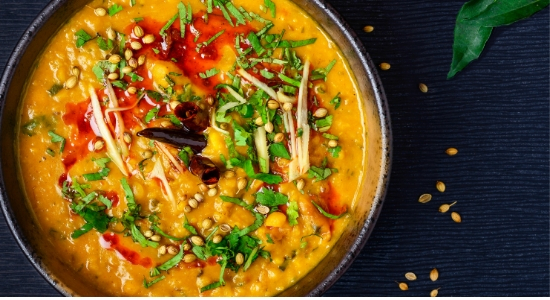
Dal Tadka served at Maziga
The seating at Maziga is comfortable and plush but not overdone because the focus here is on the food. The ceiling is perked up with giant crystal drops chandelier-style lighting.
Also Read: This Bengaluru Restaurant In India Is Doing The Nikkei Cuisine
The 15-Course Journey Through India
While the regular menu offers plenty of choices, the USP of Maziga is definitely their 15-course tasting menu, available for lunch and dinner. The tasting menu gives a whirlwind experience.
The meal starts with Chat Masala Yoghurt Spherification, Goat Brain Pav, Quinoa Upma Cod Fish Kaffir Lime Sauce. Move on to Chicken Liver Coconut, Banana Flower Dumpling, Edamame Beans and Green Peas Soup, Malwani Prawn Bharta, White Chocolate Bombs, Tandoori Smoked Duck, and Palak Gucchi Khichdi and more, ending with the 15th course, the three varieties of desserts.
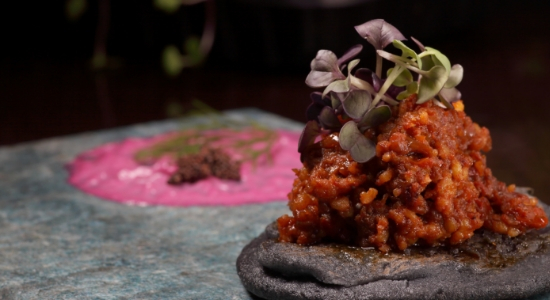
Charcoal Pancake with Malwani Prawns | Maziga
Every dish on the tasting menu is meticulously thought-out and re-interpreted to give diners a unique and alternative perspective to Indian cuisine.
À la carte menu
The À la carte menu includes a meal with good ‘ol Pind Wali Kesar Lassi, Shikanji, Matta or Jal Jeera. There’s also Blueberry or Avocado Lassi. The diners get a variety of choices in salads such as the Murgh Tikka Caesar Salad or soups such as Broccoli & Lentil Shorba. From the Chaat Bazaar section, one can pick Methi Papadi Chaat to Mumbai Beach Ragda Pattie, or the trendier Artichoke and Kale Chaat and Goat Cheese Samosa.

Seafood Pilaf (left) and Gilawat Kabab Kulcha (right) | Maziga
The pan-grilled kababs section includes choices like Tava Scallops, Daniwal Aloo Paneer Tikki with Raspberry & Amchur Chutney and Lamb Galouti Kebabs. And wait! There’s Chicken Tikka Popcorn with Truffle Mash, Maziga Naanlets and Maska Pao Bhaji Fondue too. The big, fat barbecue section offers vegetarian and non-vegetarian grills — all done in tandoor. Vegetarians can take their pick from Peshawari Bharwan Aloo, Dahi Wale Kebab or Mazika Chukunder Aur Quinoa Seekh Kebab. For non-vegetarians, there is Amritsari Crab Kaffir Lime Korma Sauce, Tandoori Lobster, Tandoori Duck and generous kabab and seafood platters.
The mains comprise curries with national representation — from Rajasthani Saunf Wale Aloo to Tandoori Gobi Mussalam and Jaipuri Bhindi Masala to Kashmiri Rogan Josh and Chettinad Duck Curry.

White chocolate Gol Gappa | Maziga
The desserts come with a few Bangalore twists such as the Malai Mawa & Gulkand Cheese Cake the Kurkuri Mysore Pak Halwa. But there’s also the quirky Bournvita Phirni and Masala Thandai Panna Cotta.
An Ode To Singapore
With a nod to its Singapore roots, Maziga offers the classic Singapore Sling with gin and cherry brandy. Classic like Negroni, Bloody Mary, Daiquiri, and Manhattan are also on the menu along with Martinis and Margaritas. There’s also a selection of international beers, aperitifs and shooters to pick from.

Chef Ashish never thought of entering the food world. It was only after his high studies that he saw his friends filling form for Hotel Management. He did the same and took admission in Kochi. Ashish never wanted to be a chef rather wanted to join operation side. But, whenever he used to cook things in the kitchen it used to turn better than other people. “Whenever I had a discussion with my professors they would tell me that you cook well and you should join the kitchen,” he smiles as he followed the same and started his career as a pastry chef. In his career he also worked on cruise lines and has travelled around 55 countries knowing various cultures and cuisines. Today, he is running top restaurants at Taj as an executive chef at Taj Bengaluru. Excerpts from the interview:
Venturing into the Food World
Once you decide to be there in the kitchen and it becomes your bread and butter you will have to focus on what’s new happening in the world. I follow all the top chefs of the worlds, latest ingredients, and equipments being used in the kitchen. We at Taj Bengaluru have the best equipped kitchen at the entire Taj group. We try out new trend, flavors and understand the taste better.
How have things evolved in last few years?
Technology also plays an important role these days in making the food better. People these days are well travelled and you don’t force somebody saying that this is the way this food/cuisine is because people known what it is. The knowledge of cuisine has evolved in Indians. At the end of the day we Indians want to be Indian to get something different and special by using some ingredients which makes its different. That feeling of making it special and elite is what we focus on. I focus that my chefs meet every guest coming to the hotel.
What is your USP when cooking food?
Due to my extensive travelling around the world I have got lots of knowledge about different cuisines. You can experiment with food but you can do the same only if you know the food, ingredient. So, with my travel I have experimented lots of different ingredients and cuisines which has helped me in creating new dishes at my hotel. What I stress a lot is the freshness of the ingredient. So, I buy everything fresh at my hotel. I fly fish from all the way to Ice land for my Japanese restaurant. We have also structured training going every month to keep my chefs updated and cook with them to show them what a dish should be actually like. It’s very important for chefs to be very hands on. If you can’t cook you can’t be called a chef.
Working on the Creative Side
Everyone is creative and got a different idea. I have 64 chefs working with me who have all got different ideas. I have got a dish of the month where all my chefs participate and create something special and whatever dish comes as top two I keep it as a main menu because every year we change menu of all our outlets and we need ideas to incorporate those dishes.
Serving the Who’s Who
I have served all top businessmen of India including Ambani’s, Kothari’s and Piramal’s to name a few. We have served lots of movie person as well and also dignitaries from different countries including President of Srilanka, Pakistan, Canada to name a few. I have served Mr. Modi for couple of times. I have served lots of international writers including the editor of Newyork Times etc.
A Moment to Remember
When I was working for Taj Safari, our clientele was very niche as we used to charge over 70000 for one night. Being in the jungle where closest village was 18 km away, getting ingredient was very tough. So, we used to start growing things on the property, hired gardeners. We started growing every English ingredient in the garden and we used to take guests there and they used to pluck from the garden and get to cook with us. So, that was something which was quite memorable for me because you don’t get such experiences anywhere.
Advice to Young Chefs
You can experiment food but first know the food. If you learn something. Learn first and then start experimenting. The young kid had got too much into fusion and presentation that they have forgot the basic of the dish. It is very important for us as a chef to know the ingredient before we plan mixing things. Whatever you cook, cook with your heart and soul and stick to basic when starting your career.

There has been a recent influx of fine dining in India due to two main factors-increased disposable incomes of families and an upward graph of aspirational quotient. This trend is becoming dominant in both metros and tier II cities. Also, a lot of the credit goes to digitisation, similar to its effects on other industries, digitisation has also reshaped hospitality and F&B Industry. With consumers, experience and experimentation being the key words, digitisation has built widespread awareness about fine dining experiences in the country. Consumer demand has inspired the industry to develop differentiated and interesting experiences even outside the 5 star spaces.
Keeping customer comfort and satisfaction at the centre, restaurants are now playing around with concepts, innovating ambience and décor and experimenting with food. Understanding that eating out today is not just about food and service, it is an experience. Some brands are going back to our roots, serving authentic regional experiences or innovating with Indian ingredients and flavours. While other restaurants are experimenting with global cuisines and experiences. Both in their own way are redefining fine dining experience to take consumer expectations to new heights. And, we can say that the future will bring in remarkable changes in the fine dining F&B landscape, all in the best interest of the customers.
Entry of Affordable fine dining segment
With the rise in the percentage of the disposable income, there has been a shift in the capacity of spending and frequency of eating outside home. Also, socialising these days majorly calls for eating out at an affordable fine dining restaurant. Millennials make up the majority of dining-out customers. Almost 700 million Indians are below the age of 30 and they are dictating the demand for affordable fine dining experiences. They are willing to spend money on justifiable experiences. They are brand-prestige conscious and hence the coming up of affordable fine dining space which was missing till now.
It is extremely important that they experience the attention of the fine dining space while not burn a hole in their pocket.
It’s All about Experience
The wholistic experience is what makes dining unique and memorable. Dining is a process, while good food and being served promptly are the most important factors. The dining experience entails taking care of many more elements – staying true to the concept, setting the menu, the ambience, the music, customised cutlery, staff uniforms, etc. The uniqueness could be in terms of the authentic flavours served. Our restaurant ‘Frontier Mail’ is a rendition of the first luxury train from Bombay to Peshawar and thus we serve the most authentic Peshawari cuisine.To deliver the true experience to our diners, we have created the ambience with décor elements from the actual train, customised furniture that is in sync with theera and theme. The menu and each dish has been carefully curated according to the concept, the flavours have been kept authentic with a continuous commitment to maintain the quality of food and service. Fortunately, our customers have appreciated our efforts and have shown their fondness by dining with us repeatedly.
Hence, it is extremely critical that a fine-dining restaurant aces in all these aspects and is able to communicate to the diners on the unique propositions being offered. Constant engagement with the customers by creating innovative engagement avenues also helps. Though, a lot of F&B spaces take the help of extending offers to attract dinners, in the long run what really works is that the customers are assured of excellent services and value for their money and time spent.

The restaurant menu is a wider concept. If I narrow it down and speak only of a Pan-Asian restaurant in India, you get so, so many options on the menu. I do not want my menu to be perceived as such. Today when you take a look at the menu of a Pan-Asian restaurant in India, you end up realising that it is essentially a Chinese restaurant with few dishes here and there. If you take up a Chinese restaurant they serve “Chinjabi and Sino-Ludhianvi” food. If a restaurant decides, ‘yes, we want to move towards serving the Pan-Asian’ as it’s the flavour of the month or it is something in demand, it should include Indonesian and Thai, too; it should maintain the authentic flavours. I don’t serve more Chinese or Japanese cuisines. In fact, I want to be less Chinese and more other cuisines. That is my vision for Wok Tok at The Grand, Delhi. You’ll see Japanese and Chinese being served less, and other cuisines more. In the orchestra, those other instruments - Indonesian, Burmese, Thai, Malay play a bit louder; Chinese and Japanese are in much more precise form. That is my vision.
Must Read: Menu Hacks For Your Online Food Delivery Business In Mumbai
You should always keep a track of these three elements while designing or re-designing your restaurant's menu.
Defining the Concept of the Restaurant
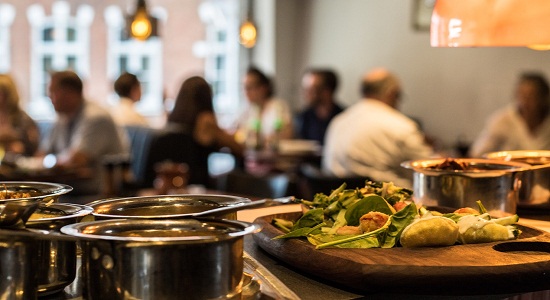
The concept may already exist. You might just want to change the menu but still, you need to readjust. The times might have changed or the restaurant has become old now. You need to focus on one question – “What is going to be the concept of the restaurant?”And then the rest - what space you want to hit the market, where do you stand and what you are. More importantly, you need to know what you are not. What your restaurant is not. Know if there are any boundaries - huge or tight, within which you’ll operate. Those boundaries have to be very well defined.
Respecting the Geography

In terms of the area or the geography you are in, you have to respect those sensibilities. If there are more vegetarians, your menu has to be designed accordingly. Geography doesn’t mean just the location; it’s the times, space and the place you live in. You see much more examples of lactose or gluten intolerance than you would see 10 years back. So you have to have those options on your menu. If there are more vegetarians, you want to have those kinds of cuisines. The next menu I’m doing for the Cascades, my all-day dining restaurant, 40-45 % of the menu is vegetarian. So, you have to respect the geography and what the market demands.
Click To Read: Points To Consider While Designing Menu For Restaurant
Maintaining the Balance, Flavours
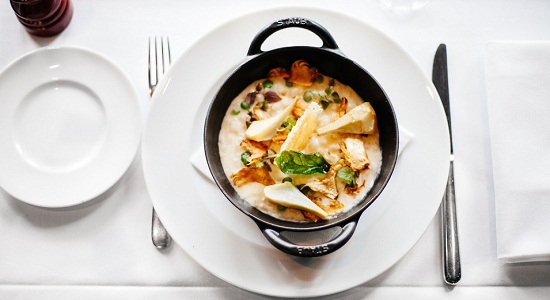
And then you have to look at the balance of rich vs light food. I always wanted to have my food very flavourful. Whether it’s an Indian, European or a Japanese restaurant, I don’t like bland food. When I say bland food, I don’t want you to mistake it for the spicy cuisines we are served in India. It’s the flavours that matter. The flavours have to be robust - that is my thing. I have visited a lot of restaurants and had insipid food that really didn’t speak to me. I love vibrant flavours. That’s a personal and individual thing to me. And then I prefer to balance across from rich to light, from flavourful to delicate, from spicy to non-spicy, from veg to non-veg; you have to balance all these aspects, based on the geography, and the kind.
As told to Sara Khan, Feature Editor, Restaurant India

With the augment of the new age of technology where everything is getting digitized, the restaurant menus too are stepping ahead and going digital. The hard copies of restaurant menus are replaced with the digital ones and there are not just one but many benefits of a digital menu. Not only is it cost effective since you will not have to print menus every time you bring in the slightest change but also very appealing to the eyes since your customers can see the entire menu on one sight, which in turn will help you in upselling.
“Digital menu gives wider access to customer, unlimited reach, customized & personalized offerings to give better experience to customers, easy promotion by tweaking price, Keeps ahead of the competition, enables timely feedback from customers. All of it increases loyalty of customer hugely, “shares Ranjan Agarwal, co-owner of Salad Chef.
Digital restaurant menu has an upper hand over the traditional restaurant menu for not one but many reasons. Since most of the restaurants are automating their restaurant operations, it is easy to make the transition as well. The main reasons why the shift to the digital restaurant menu is important are:
Cost Effective: Unlike a traditional static menu board, costs can be reduced by diminishing the need to design, print, ship and reprint menus whenever promotional items are added to the menus. Once you have your digital restaurant menu designed and installed maintaining it is simpler as it requires small tasks of uploading pictures and posting on any of the social media platforms. Since a digital restaurant menu can be edited easily, it gives the advantage to your café or restaurant to be dynamic in your offerings – for example, tweaking your food to adapt any latest trends or any seasonal festivities.
Easy Menu Updation: When digital restaurant menu is integrated, all changes on the menu relating to the menu items and the pricing can be managed remotely so that either all or only the selected few restaurants (if it is a chain) gets it updated on the e-menu.
Reduced Dependency on Manpower: Automation always frees up the reliance on staff and reduces dependence on the external forces like the manpower. If you have an e-menu on every table, then orders need not be taken down by your servers, which will in turn help in freeing them and reducing the need to schedule servers during peak hours. Not only will this reduce your need to tap the right restaurant staff, and then train and retain them, it will also reduce the scope of mistakes while order taking and the instances of misplacing orders. Since it is your customers who are placing the order the possibility of sending the customers a wrong order would be nearly negligible. The digital restaurant menu is a highly accurate system and leaves little room for mistakes.
Enhances Customer Experience: The digital restaurant menu is highly beneficial for your restaurant since it helps to make your entire guest experience more comfortable and convenient. With a stellar HD photo displayed on the tablets, it would allow your food items to appear more attractive. Your digital restaurant menu will also help to suggest food items to customers according to what they are look for or point them to the more popular dishes for that week. Hence, your digital restaurant menu will be able to provide a personalized experience to your customers.

How did food happen to you?
A man is what he eats. There is nothing else in this world that stimulates all our five senses. Given the diversity, you could go on eating new cuisines everyday yet require 12 Lives to live to taste all the varieties available. And by then I am sure we would have explored more cuisines.
What was the whole idea providing consulting to restaurant brands?
I believe managing and operating a restaurant is an art. Having an educational background along with work experience with some of the most renowned brands in the industry like the Marriott group helps other restaurant brands in their growth. Hence, we as a hospitality company started taking up management for restaurants apart from our owned ones.
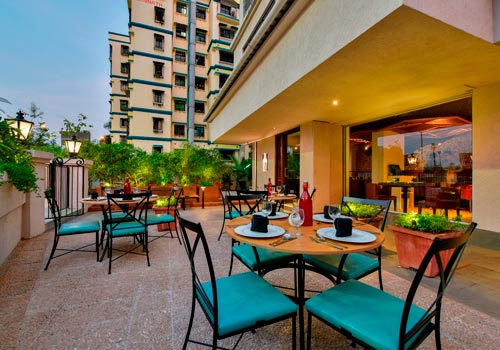
How is your service unique from others in the industry?
We believe in creating a human touch in everything we do. Our company offers a complete set of services required to run a restaurant or a hotel and with a bunch of young minds and experienced teammates, thereby making us unique.
When did you think of opening your own restaurant?
Having our own restaurant was always on my mind. However; in the beginning of 2017 I worked upon my dream project which had its own unique concept which involved a good amount of research work and a well experienced team. Once everything amalgamated we opened our first restaurant in May 2017.
How much money you have put in to come with this concept?
Well, the key is that you invest only the amount you are sure to get the return of. Feasibility study has to be very important. If you ever want to calculate a rough approx just multiply your sq. ft area with INR 8000. You should get an estimated figure to begin your work with. But remember, location is the most important thing here.
You change your restaurant menu every 14 days with one international and one Indian cuisine. What is the idea?
Mondo Fine Dine being my first restaurant, I wanted to have a unique concept which would educate people about various international cuisines. Hence, we started with the concept of changing our menu every fortnight.
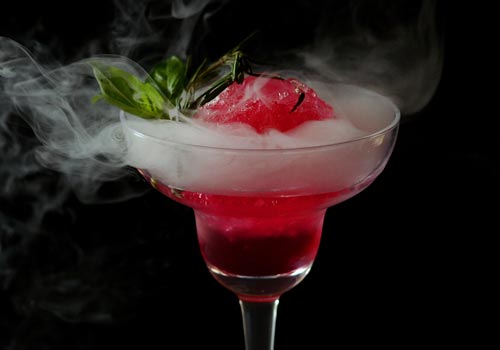
How much do you believe in local and sustainable eating?
Firstly both the terms are not same. We use a lot of local vegetables which are bought and sold to us directly by the agri community from the forests. Have you ever tasted a smoked bamboo or something which is called chicken spinach? I believe more than anything, the ingredient has to be sustainable, cause remember everyone will taste it in the future.
What is your favourite part of playing with flavours?
I love breaking the flavors. It takes a lot of patience to find out the complimenting flavours which help in breaking the flavor. One has to keep in mind that he cannot play with the texture of the key ingredient of the star of the dish. He could end up finding a new complimentary flavour all together. As once we mixed Kafir Lime, Curry leaves and Sugarcane to create the highest selling drink of MONDO.

What trends you see going forward that will disrupt the food biz?
Molecular, Nitrogen foaming and Fusion. These started with complimenting flavours and now the texture and state of the dish is first decided before deciding the dish. I believe that ingredients should be given respect. They go through a lot before reaching your table.
What is your expansion plans?
I believe in moving forward slow and steadily hence, we are expanding slowly and shall be announcing about the same soon.

Over the years casual dining has become one of the fastest segments to grow, capturing both quick service and fine dining customers. With 33 per cent of market share, the sector has become investors’ first love in the food service game where they prefer putting in their hard-earned money. And, as people are eating out more day by day this segment of the market is divided into two parts depending on the location and the target group.
Prioritizing on Affordability
“Customers have money and they like to experiment, so when a new concept is launched most people give it a try. If the concept wins the guest by good service, affordable price, innovative ideas there is a repeat visit and the concept is successful,” shares Sharad Sachdeva, CEO, Lite Bite Foods adding that as casual dining is getting more and more acceptable, restaurant owners are dividing it into two categories basis the location and customer.
According to a latest research done by CBRE, Casual dining restaurants (CDR) has been a category that has gained significant traction in the past couple of years; with the category accounting for almost 46 per cent of all restaurants that were a part of the survey. In terms of location, more than 60 per cent of CDR’s in the survey are located on high streets.
As the F&B landscape matures, it has given enough opportunity for the emergence of home grown chains. With the availability of funding and PE investments in the F&B business, operators have expanded their brands across cities. NCR and Mumbai are the cities that witness the most "cross expansion", with chains headquartered in either of the two cities expanding to the other city fairly quickly.
“The customers are less choosy yet very impulsive while dinning out. It is not essentially affordability that is important for customers but also the QSC (quality, service and the cleanliness) at any dining segment which is mandated to magnetise repeat visits,” points Abhinav Yadav, COO of Cybiz BrightStar Restaurants Pvt. Ltd which runs burger chain Carl’s Jr in India.
Driven by New-Gen Customers
Casual dining restaurants are very different as they focus on customer experience, however their USP remains affordable pricing. “Millennials the right customer base for ACDRs as for them pricing is the most important aspect apart from innovative ideas and service, most affordable casual dining concepts addresses all these aspect,” adds Sachdeva who launched Tappa and You Mee to give unpretentious food at very affordable prices with excellent service and ambience that youngsters love these days.
Commenting on the same, Atit Verma, Co-Founder, Tpot Café says, “India has a big appetite for eating out. The economics of running a restaurant isn’t keeping up. The amount of real estate available to restaurateurs is limited, rentals are constantly increasing and yet consumers are going for (cheaper) casual dining, making it harder for us to break even.”
And, as most of the target customers’ in this segment is well travelled and well read, informed, they know the importance of good ingredients and amicable food at a pocket friendly. “Unlike a Quick service restaurant, the casual dining restaurant not just focuses on the quality of food to be served or delivered but a lot more value added services adds on to this particular format,” adds Yadav.
With dominance from domestic players ACDRs have seen high growth inviting international chains like Pizza Hut and Carl’s Jr to invest deeper into the segment.

The World of innovations have certainly opened up for restauranteurs and chefs, as the trend for small portion and plate is catching up in our country. With a sudden high demand, this trend is surely catching up the menus of many restaurants making a great appearance in the food industry. The trend is allowing people to try more than one item on a single visit to a venture. “Restauranteurs need to take a serious look at how they design their menu and cost. It is true that most people eat less due to health compulsions or the need to remain fit but that does not mean the food should be insufficient,” says Reynold Fernandes, CEO, Oriental Cuisines.
Previously it was predicted that this is one of the trends which will eventually find its way into the menus and now we can see that those words are coming true, making the prediction come true. This trend has taken the industry by storm gathering a lot of people in their corner. The tradition of small plate originated from Spain where people preferred to have a bite with a drink and then moved on to the next bar. Initially the concept didn’t appeal to the people as they were in the habit of sitting longer for a fine dining session with their friends and families and had their own favored dishes to order to. But with time the things gradually changed. The same people started spending long dining time with their loved ones and trying quick small plate varying in taste and ingredients.
Earlier, people also used to dine out to celebrate occasions saving their money and time. But it’s a passé now. With QSR and other quick chain ventures establishing, people now usually dine out four to five times a week spending smaller amount each and every time. That’s where small plate concept comes into play. It allows people to taste variants of cuisines in small quantity saving money at the same time. Hence, we can say that small portions allow a chef to serve diversity and variety of items in front of the diner experimenting with the plating techniques and flavors which usually interests the customer. These are the elements which make the small plate a clear cut winner when it’s about attracting the guests. Age group and the social economic factor are playing an important role in the demand of small plate.
The advantage of having small plates in the menus is that it provides a variety of option for the customers to try various dishes. Fitting to the pocket, these meals gives full justice to the food lovers who are looking for variants dishes spending small amount of money. In addition, small plate provides the right quantity of food which is essential for a person dining. The choice of having such meals has become more in demand as the QSR chains like McDonald’s and KFC have also introduced items like bowls which is serving as small plates.
“In today’s day and age, food is fashion. It drives our conversations and even our browsing habits. The internet has made the world smaller and people are travelling more so there is loads of awareness and exposure to different cultures and cuisines. This has brought about the change,” adds Chef Michael Swamy who is running the fine dining restaurant Nueva in Delhi.
With so much to offer, small plate is attracting a lot of people and is expected to grow even more with upcoming times. Appropriate food in the right quantity with mouth watering taste is something to look forward while dining out. Experimenting with these products has become the trend as its providing people to try various dishes at a pocket friendly price satisfying their hunger.

Superfood is one of the most talked about trend today, which in no time has become a part of our daily life. A trend becomes a trend only when there is a change in the customer behavior.
Being a health conscious person and working in an environment that is so stressful and having to live in Delhi where we know that what we are breathing is not fresh air but smoke and pollution, it became imperative for me to approach a nutritionist. That is when I met Kavita Devgan and she told me about the magic of consuming superfoods. What pushed me to believe in her is that she did not suggest or advice anything that was a huge change in my existing lifestyle she planned everything around my existing habits.
Being in the food industry and also a food lover, when I discovered superfoods I believed that I could also incorporate something healthy at my restaurant and offer the same to my customers and guests. That is how we came up with the idea of having our own “Superfood” menu. Kavita and Chef Ashish (Corporate Chef, Café Delhi Heights) sat down and first listed down the superfoods that we wanted to incorporate and then worked around the recipes. Throughout we tried to keep all such superfoods that were of Indian origin and easily available.
The entire thought was that generally a cheat meal for most of us would be an outing to our favourite restaurant but today at restaurants everyday can be a cheat day with the superfood menu they are offering. The menu is like a bible with all the information which people can take home with them. It has the importance of each superfood used and also our recipes from the menu.
However, when initially this kind of menu was launched, people in the industry were skeptic on how it would do but customers started picking up the trend and enjoying it. Soon the menu picked up and people started coming to many restaurants only for the superfood menu. Most of my friends have told me that they tried the dishes at home as well with the help of the recipes that we have given out. Café is a place that has always focused oncomfort food since we opened six years back.I think what connected really well with the people is that the superfood menu has some very easy and comforting dishes in which the superfood is not just a side ingredient but is the hero of the dish.
We are known for trying out completely out of the box things and the idea of a superfood menu is one such example. Earlier, when it was launched in May 2017, the menu was suppose to be only a month long feature at our Sangam Courtyard outlet but on popular demand we have now moved it to our Crosspoint Mall outlet.

A well–travelled chef with an innate understanding of culinary concepts and a strong passion for innovation, Vikas Seth comes with over two decades of work experience travelling across some of the best culinary capitals of the world.
Growth of restaurant biz
The F&B market is opening up year on year and I feel stand alone restaurants are doing really well in the market with good stake. Fine dining has also got a holistic touch in standalone environment. I can feel that everyone today is growing. If you see at the organised part of the industry it is only 30 per cent and 70 per cent is still not organised and its actually growing and I think it will move more towards organized segment soon. From past 20 years I can see a lots of food development happening, people travelling more, they are ready to spend more and there is high acceptance level amongst the crowd with new concepts and varied cuisines. People are eating out a lot and it is great signal for the food industry to do more outlets.
Creating Mexican waves
If you go in detail its very surprising. Mexican cuisine is very much familiar to the Indian cuisine. Both have a legacy and have a history rich cuisine, ingredients are plenty. There are a lot of chillies used to prepare the food which are all not spicy but obviously flavorsome. Mexican cuisine is beyond Nachos and Tacos.
On his own Restaurants
I am chef and culinary director at Lounge Hospitality. My role other than cooking include conceiving, creating anddeveloping menus, work on new ideas, teach staff and obviously the costings. It’s a lot of fun and as I am born and brought up in Amritsar I love eating and cooking good food. Almost every day you are creating something new and doing something new. It’s very challenging as well as exciting role with lots of travel which I love. I am travelling to a place called Oaxaca in Mexico soon. This place is what Punjab is to India for culinary delights. I am going to a Mexican food capital with a Mexican chef which is going to be very exciting with lots of eating out and learning more about the cuisine and culture of the place.
Why Mexican cuisine is still a challenge for people to do is because of the ingredient sourcing, can be the chillies or right masa. To get all these things there is lots of backend work that has to be done. Though, it’s always challenging to do foreign cuisines in India but as I have spent quite a few years doing it, the challenge has reduced for me. We are importing integral parts of it from Mexico and avocados we are sourcing locally.
Design that boasts
We have designed the restaurant in a way that we have a bar at the centre and on the left we have 100 cover restaurant Sancho’s and on the right we have Singkong which is 70 cover restaurant. The Mexican has a rustic look whereas Oriental has more Pan Asian feel to it. As we are present at the best location in Bengaluru, that is UB city, our mouth watering food at both the places along with great location adds up to the better footfall at both of our restaurants. We have a kitchen which is divided into two, one side is oriental and other side is Mexican and operationally it works well for us.
The crowd puller
Footfall at our restaurant ranges from 250 people on weekday to 600 people on a weekend. Since most of the females are also working in Bengaluru so they tend to eatout more as compared to other cities. It is a price sensitivemarket, so the right portion size of the dishes, to get a real value for money pricing is the key. We also work on small plates in our Mexican restaurant to make the pricing more attractive and at the same time guests can try more variety.
On growing trends
Standalone restaurants are doing well, lots of regional food is also doing well and home chefs are being recognized. People are travelling more and so awareness about foreign cuisine and lot of ingredients is growing. People are appreciating new ideas. And, today you have clientele for every product and there is room for everybody to excel. The key is the taste and marketing for sure!!!

As Indians are continuously experimenting with food, it has become an integral part of the conducive business in the country. We see people travelling a lot these days in search of good food and experience culinary repertoire of regions and nations pushing a region wise food trend in the country. Gone are the days when Asian food was limited to Chinese cuisine, restaurants today are offering much more than Chinese and Japanese. Pan Asian cuisine is the new wave in the market with speciality restaurants breaking all food myths. This has pushed a new trend in the industry giving a way to lots of Pan Asian food delivery online place opening up. Cities like Delhi, Bengaluru and Mumbai has already witnessing this change but smaller cities are also joining the bandwagon and setting up speciality delivery places.
Why delivery?
Kula Naidu who was one of the first entrepreneur to set up this trend by setting up only delivery places Asian Haus and Sushi Haus in Delhi four years back today see the great potential for the segment and feels happy to see the awareness of comfort asian food growing in the market. “We realized there are a large demand for delivery and the scarcity for good comfort Asian Food. Our focus is on emphasizing the experience of food delivery and extending it towards a complete brand,” added Naidu who believes that Asian food has a large popularity and is well understood by Indian customers. Since, there haven’t been any places that cater in the same capacity as us, it was our calling. With Italian food, it’s unexplored territory, he further pointed.
Similarly, Joseph Cherian who has spent a substantial time in Asian countries working as CEO of GFA Global and Papa John’s India, he always enjoyed Asian flavours and always dreamt of bringing those flavours back to India. He together with his friend and chef Nabhojit Ghosh under Love Food Ventures Pvt Ltd started 48East which is marked by a multiplicity of regional and ethnical influences. The start-up is representing foodies trail from around 48 countries.
“I spent most of my working years in Asia and Middle East and always felt the need of gourmet Asian food home delivered in India during my stay in India. What is typically available in India for home delivery were home grown Indo- Chinese brands. In addition to the Indo-Chinese food, Asian food was typically a Thai Green curry or red curry, Malaysian, Singapore noodles etc,” shared Kurian who thought of bridging this gap.
Getting the right raw materials
Asian food is all about the complex flavours. Hence, getting the best raw materials is the important aspect of this cuisine. Though, with modernisation and global trade some ingredients can be sourced locally but for few one need to get it flown from their home location to meet the authenticity of that land.
“We have tied up with various suppliers to supply us with both locally sourced and imported ingredients. We need to import some of the items to ensure authenticity of the dished,” added Kurian.
Sharing on the same, Naidu pointed, “a lot of the raw materials required are available in Delhi. Supply does end at times and we can’t do much about till new stock arrives. We deal with vendors who import these raw material from Thailand and Japan majorly. Sourcing is a lot easier in Delhi as it’s the capital.”
And, as we see this trend catching up fast with new players venturing in the space, a lot more focus is showered on presentation and delivery of the food.

The food preferences of Indians are changing with more and more exposure to global world. Today, people like to travel to taste newer cuisines and experience food heritage. This goes same with the drinking culture as alcohol drinking is no more viewed as a taboo in the market. All thanks to the new age wave of bar and pub culture that’s setting a newer heights for the industry. From food being the preferred menu, restaurants today are doing a hell lot of beverages and innovative drinks to attract the new age customers who are more open to learning new vibes in the country.
“Younger people have more disposable opening and exposure to various brands and trends etc which makes it easier for them to accept new stuff. The audience is also more traveled so they know how alcohol works with food,” shares Chef Mitesh of Lemon Leaf.
Alcohol is becoming more and more important and it is no longer as a taboo with this generation. And, this is not enough, even families are becoming open about this and it’s becoming main stream. Today restaurants have an extensive bar menu and not because they want to focus on liquor but how well it goes with the food. For example restaurants like Kylin which serves Asian food love to pair their food with some drinks. “Kylin has always had an extensive bar menu at its restaurants. But the focus has been on not all liquor but specifically what goes well with Asian food. Beer and whiskey is what goes well with Asian flavours, however if you’re looking to pair Italian food with alcohol then wine is your go to liquor,” says Saurabh Khanijo Owner at Kylin SkyBar.
Over the years, alcohol has come up as a major companion to food all credits to the ever evolving Indian palates which is undergoing a change. As Indians become more well-travelled and well-versed in the ways of the world, their understanding of alcohol is also undergoing a transformation. Earlier alcohol was consumed for the effect but of late, people have noticed the taste and are trying to pair it up with food.
“At TANDDAV and Smokeys our team does recommend certain wines/malts/cocktails which we believe compliment a certain meats or dishes to enhance the experience for the customer,” adds Shiv Karan Singh of Taandav.
Going by the law
No matter alcohol is a major trend in India and people are accepting and enjoying it. Not only this business at Bar is the new trend that is attracting corporate to these bars and pubs. Gone are the days when people use to have some discussions over hot cup of coffee, today all the major decisions are made over a glass of wine. But, despite of all this changes that is ruling the industry these restaurants and bars need to have t least 10-15 licenses to make you enjoy your time.
“We respect the system and are in agreement with the formalities that are to be followed. It is hard, full of bureaucracy, but that is the way it is,” points Naresh who runs one of the happening cafe Imperfecto at Hauz Khas village.
Commenting on the same, Manish Sharma of Molecule Gurgaon, shares, “It is not difficult to go with the legalities if everything is fait and transparent. We are truthful to our work and deeds, Thus We as team face no difficulty.”

Talking about 2015 alone, there were about 50 deals making a total of about $200 million investments.
With this uncertain growth driving the US$13.56 billion Indian food industry and growing at a rate of 17 per cent per annum, these companies are getting investors’ attention by raising funds for strengthening their team and expansion in the country.
The money guzzlers
Investment thrust in food start-ups has witnessed a rapid growth in last two years. Over 100 companies got funded from top investors in the country, making 2015 the year of food investments. According to advisory firm Grant Thornton, investment values increased at a compounded annual growth rate (CAGR) of more than 57 per cent between 2011 and 2015, while investment volumes increased at a CAGR of over 62 per cent.
Bengaluru based Swiggy, a food ordering and delivery platform has grown over 20 times in the last few months. This online food delivery model has witnessed continuous growth in orders from its inception, which has assisted them to expand to other cities.
“After analysing the consumer landscape in India, it became clear to us that Swiggy as a food delivery company is best positioned to win, given their focus, execution, and long-term vision,” said Michael Chou, Partner at Harmony Partners. “Their growth is very strong and they provide much better experience to customers and restaurants (Two key stakeholders in the ecosystem). We are very excited to partner them and help broaden their lead.”
On the other hand, Mumbai based HolaChef has so far raised 3.4 MN by Anand Lunia (India Quotient) in January 2015, Kalaari Capital in June 2015, Ratan Tata in September 2015 and a few angel investors led by Kashyap Deorah.
“In food technology business, scale is the key. However, the core idea that led to Holachef’s existence is the personal touch of a chef,” shared Saurabh Saxena, Co- Founder, HolaChef.
Overcoming challenges
Major challenges for such start-ups are standardisation and availability of fresh supply. As the model is cashing on the delivery space, poor infrastructure and traffic conditions pose a problem, adding limited shelf life of the product and varying taste preference of a diverse audience.
“We are trying to manage these issues using technology and reliance on historical data to predict demand for a certain taste or recipe, added Saxena who delivers 2500+ orders daily to locals of Mumbai and Pune.
Another major challenge hitting this industry that led to the closure of many start-ups is the popular belief that food ordered from restaurant is unhealthy. It’s a big mental block that people have.
“ZuperMeal connects homemakers who love to cook, with consumers who like healthy and tasty home-cooked food. We get the freshly cooked food picked up and delivered through a network of delivery boys, and also do the payments settlement between the consumers and providers, shared Pallavi Saxena, Co-founder ZuperMeal, which is backed by Sanjeev Kapoor.
Scaling on variety
As this sector is giving customers’ a wholesome choice of wide variety of food, these start-ups are luring them with exotic delicacies. Recently, Gurgaon based InnerChef, which serves quick ready to eat meals has acquired Flavour Labs, a food truck in Gurgaon and EatOnGo, an on-demand meal services in Bengaluru. “These acquisitions will help extend InnerChef’s offerings amid two of the fastest growing markets in India: NCR and Bengaluru. We are also acquiring awesome talent who share our passion for food and technology. We are on a high growth path and excited about building India’s biggest food tech platform, “shared Rajesh Sawhney, Co- Founder, InnerChef.
Seeing a great opportunity in centralised kitchen segment, Holachef is on another ride to enter the space.
“The centralised kitchen facility is thus an opportunity for our chefs to scale. Because of this change, we have been able to extend our service hours (now we deliver from 9:00 am to 11:30 pm) and more categories (we have added breakfast and evening snacks recently),” added Saxena who is planning to replicate the same model in other cities. “For now, we will focus on consolidating operations in Mumbai and Pune. Then, we plan to expand to at least 2 more cities by end 2016,” elaborated Saxena.
Hence, we can say that Food-tech is much more than online ordering and delivery of food. There is a lot that can be done to bring technology in all aspects of food - from raw material supply to order management and delivery management. Today these players have started tackling this space diligently. . It will take some assumptions, more of innovation and technology to organise this large space and bring in unprecedented level of efficiency in the entire food-space.

2015 could be named as the year of fast food revolution in India in the history of Indian food industry. From global players to local vendors, all have experimented a lot to make their food suitable for Indian palate.
Amid all this, the growing demand of local and healthy ingredients with twist of menu and a variety to linger upon, these players are introducing new snack options to target customers’ who are always on the go and who are poised to try something new.
What’s cooking? Wendy’s, the world's third largest burger chain is introducing a new menu with snacking options that will cater to consumers looking for a quick bite between meal times.
“The new menu was developed after exhaustive consumer insight and research, is part of our strategy to strengthen Wendy’s as an all-day dining restaurant,” shared Jasper Reid, Director, Wendy’s India.
On the other hand, its competitor, Burger King is also sailing on the same boat, Burger King which entered Indian in November 2014, is planning to start selling chicken fries in Indian market, to grow stronger customer base in the country.
"Around half of our menu in India is vegetarian. We have a big assortment of grilled products as well. The chicken fries will be fried in oil that will have zero trans-fat. The portions are white meat from chicken breasts,” added Rajeev Varman, CEO, Burger King India, who believes that this new addition would them a new customer base in the country.
Feasting on best
The delectable new menu at Wendy’s consists of some delicious snacking options, for those looking for a quick bite. There are classics like the vegetarian Railway Cutlet and Railway Cutlet Wrap. For non-vegetarians, a new addition is a Crispy Chicken, Caesar Salad and brings some amazing frosty shakes.
“We have expanded our menu, with these great new snacking options, that are just perfect for consumers seeking good quality light snacking options and are competitively priced as well.,” added Jasper.
Likewise, the fries at Burger King will be launched in two packs - five pieces for Rs 79 and nine pieces for Rs 139, and will be coated in a light crispy breading, seasoned with savoury spices and herbs, said the company.
"Chicken fries are a new product for India but it is not new to the western market. We are not trying to compare or compete with anyone. I don't think that it is a parallel product with KFC either,” added Varman.
Earlier, Carl’s Jr also launched The ‘Green Burger’ which are called ‘low-carb’ or a ‘lettuce-wrapped’ burger will consist of the guest’s choice of any patty with fresh veggies and sauces inside, wrapped by a thick layer of lettuce leaves.
With more new entrants and small tech start-ups, fast food is likely to continue to grow further over the forecast period, according to Euromonitor.
And, with a price range that is affordable to all and is easy to grab, fast food industry will continue to grow in markets like India where majority of populations are young and experimental.

The necessity of eating breakfast has been emphasized time and again for a person to be able to take on a busy day. From global restaurant chains, ready to eat and cook players everyone is focusing on healthy breakfast options.
Even, the fast evolving food-tech business and on-the-go players are venturing into breakfast space as people who have a busy lifestyle or are on the move and do not have the time to make and eat breakfast are eagerly looking for such options.
Serving fresh
India's breakfast cereal market has been growing with a CAGR of13 per cent from 1168 mn to 1450 mn over last five years. In addition to Ready to Eat (RTE), the breakfast category is driven by hot cereals – Oats (33% YOY). Today, oats comprise approximately 30 per cent of the category sales in modern trade.
Delhi based Bagrry’s is betting big on the Oats market, and has invested in matching health and innovation. For Bagrry’s Indianisation in the category is not just limited to creating different flavour variants. The company has done research and innovation to create a whole new range that is not just palatable, but also allows consumption in a familiar format.
Not only this, the company which holds 17 per cent of the market in breakfast cereal makers in a market estimated at over Rs 800 crore, is planning to open QSR restaurants with healthy food choices. Named as Bagrry's On the Go, these stores will serve food and beverages such as oats-based sandwiches, burgers and bagels, muesli and wheat bran-based desserts and multigrain meals for lunch and dinner.
"The entire focus will be on healthy foods and every food or beverage we serve will have our own ingredients," shared Aditya Bagri, MD, Bagrry’s.
Likewise, MTR Foods Pvt. Ltd., the pioneer of packaged foods in India has launched their latest addition to the extensive breakfast mixes range– Breakfast in a Cup with the Upma and Poha variants. The Breakfast in a Cup range has been conceptualized and launched to provide wholesome and convenient hot Indian breakfasts for rushed mornings.
“We have done extensive research on the breakfast meal occasion and we realized that though breakfast is important, many people, especially the youth end up sacrificing the meal due to paucity of time,” said Vikran Sabherwal, Vice President - Marketing, MTR Foods.
The company is also working on launching the perfect product that ensures quick wholesome breakfast for busy mornings without compromising on the great Indian familiar taste that everyone loves. Ready in just 3 minutes by adding hot water, young busy consumers can now enjoy their favourite Indian breakfast in a convenient format.”
Grabbing and going
Growing health and wellness awareness was one of the key trends which drove sales of breakfast cereals and foods in 2015. Consumers are looking for healthier alternatives to traditional Indian breakfasts and moving towards breakfast cereals, which are considered to be healthier and more nutritious. The major bulk of consumption of breakfast cereals happens in Tier-1 and Tier-2 cities because of the long working hours and the increased share of working women, which is pushing them to look for faster arrangements for breakfast.
Globally QSR chain McDonald’s has already made headlines for spreading and investing into its breakfast segment. From serving the best easy to grab meals to focusing on healthy breakfast menu, McDonald’s is focusing on All-Day breakfast options in many countries today.
Similarly, the trend is catching up in India with local restaurants taking this route. Cafe Mangii, Yellow Bar All Day, Social Offline, Panaya and food-tech companies like FRSH, Swiggy, Faasos, Eat First are selling high on the breakfast options.
Hence, we can see some major trend hitting the industry in 2016 as people are no more looking for a biscuit or yoghurt in the morning. They want more qualified and healthy menu with an equal portion of protein, vitamin, calcium and other nutrients.

Street food popularity especially in India, is known by everyone. As people say that traditional food served by street vendors is loved more than fast-casual restaurants. It is only few years that the restaurant business had a kick start. Street foods, ready-to-eat food or drinks, which used to sell in streets or public places such as markets or fairs by hawkers or vendors, were more in style among the people.
Coming of street food
Due to this, many restaurants have added street food in their menu. Street food does not include only traditional food, but has an endless variety. There are many ranges in the raw materials and in the process of street food, beverages, snacks and meals.
“We mostly cover continental food. Known for being a breakfast cafe, we also cover lunch options like pastas, burgers and sandwiches. We're constantly trying to fuse elements of western and Indian contemporary food”, commented, Nathan Harris, Owner, The Hole in the wall.
Similarly, by looking at the restaurants, many food start-ups have started street food or ready-to-eat food in the menu. It has a huge demand among customers and took less time to prepare meals.
Recently opened Indian street food snacks restaurant-IMLY. Varun Puri, Owner of IMLY states, "Imly is opened with a vision to serve the delicious and authentic street food from India under one roof and that too in a pleasant, congenial and captivating ambience without increasing the burden on your pocket".
Moreover, mobile food truck, the new concept became well established in India mainly in metros. It has an advantage of serving food on street and any number of culinary creations from street-side location. On the same note, Jyoti Ganapathi, Founder & CEO at Dosa Inc speaks, “Our goal is to approach the customer unlike a restaurant or a shop where they are waiting for customer to walk in or call. When we are in a neighbourhood, we are the only option for food that residents will think about; nothing is more convenient or compelling than us on that day. The food we offer is South Indian. It is a food that most people have tasted before and enjoyed, but what we do is ensure that the taste is authentic and has a home feel to it”.
Diversity in India
Vada Pav, Mumbai known street food, which won’t be wrong to say, has actually made a big name for the city in street food. “Many places are serving “Indian street food” and calling it gastronomy or fusion. I feel its “gimmicky” food, which works for many people, but I feel Mumbai’s street food can never be replaced by fancy presentation or by adding smoke to the vadapav”, Bunty Arora, MD, Doppio Bar & Brasserie.
We all know that street food is not hygienic, but still no one can refuse those deep-fried aloo tikki, gol gappas and freshly steamed momos. Street foods are inexpensive, delicious and easily accessible across the country. Today, street menu includes pizzas, pastas, salads and many more. Even international cuisines restaurants have come up with street food menu.
Therefore, today, street food reflects both cosmopolitanism as well as carbohydrate-fuelled foodstuff.

Food-lovers across India have preferred hot and spicy foods when ordered online, said a survey conducted by Foodpanda, a global online food delivery marketplace.
The finding, released on the occasion of International Hot and Spicy day, was conducted on the basis of food ordered online over the past eight months across the metro cities of India.
Amongst dishes, chilli chicken topped the chart as the hottest and spicy cuisine ordered the most in Delhi, Bengaluru and Hyderabad while Andhra delicacies have been termed super spicy by food lovers.
The survey showed that food lovers from Hyderabad opted for Chinese and North Indian cuisine the most while the people of Mumbai and Pune went for experimenting with Mexican dishes.
North Indian veggie food item aloo dum got eaqual attention from the taste buds of southern and western India. The findings also showed that Chennai stuck to chicken chettinad.
Mexican burger, Andhra chilli chicken, lal maas, Mexican wings, aloo dum, American bbq chicken wings, el Mexicano taco, chicken chettinad, Mexican green wave and chilli chicken are the top ten rulers of hot and spicy food ordered online by the urban population in India.

Did you ever imagine yourself sitting at a place and enjoying food with your favourite actor’s poster and pictures on wall? The dialogues that you have always admired and practiced, a place that serves foods like "Jab main chota bacha tha" aka garlic bread with cheese and "Chicken chameli" aka tandoori chicken, Tofu Kabool Karo and many more. Get ready for all the ‘Tadka’ that you have always missed while out on a date or partying with friends.
Yahan sab kuch ‘Filmy’ hai
Today, people tend to find that connect or thin line in their food and they compare everything with a movie. I believe these are the two most important things in life, which makes a person happy when he is stressed. And, restaurateurs have got this right by bringing both together. Filmy themed cafes are a new theme that is up in the Indian food market in the last one year.
Restaurateurs like Priyank Sukhia, Umang Tewari, Deez Biryani fame Thakur Bhuvan Singh are creating a new food scenario in the country. Sukhija, who opened Light Camera Action, is a concept restaurant with Bollywood theme ambience for all movie buffs. To get the Bollywood feel, they also have a tripod stand, which the directors use, cameras and Bollywood music. The music which is played at the background is decent to the ears.
“We all are Hindustani and love the flavours of our movies. Light Camera Action will be a fun and quirky place with Bollywood themed interiors, artwork and displays with popular dialogues like 'Mere paas maa hai' and much more,” shared Sukhija.
Adding to the lines, Seep Prateek Gambhir, Owner, Mumbai Matinee, pointed, “Before launching Mumbai matinee we actually researched for six to seven months. It was like a complete thesis which we have done. From the start of the cinematic experience which was "Alam Are” to "hum Apke hai Kaun”.
Selling on traffic
As these restaurants are giving the customers’ not only food, but an experience that they can cherish, they are attracting a large footfall. Located at the premises or near to a cinema hall, restaurants are also attracting the customers’ who are out on movie.
“We have two categories of Customers who visit us. The first being cinema goers, who usually visit us before the movie show or during intervals, these customers have little time and usually order for quick snacks and shots. They typically spend anywhere between 15-30 minutes and we ensure that the service they receive is very quick with average price cost of Rs 400-500. The other is the regular diners, who take out time and enjoy our food, beverages, shesha and music. They typically spend 2-3 hours with around Rs 800-1000 total spend,” expressed Singh who owns Filmy Cafe & Bar at the premises of PVR Cinemas.
Commenting on the traffic drawn, Vivek Bhargava Owner at Light Camera Action, Rajouri Garden said, “Every hour has been high traffic hour at Light Camera Action, we have seen numbers going up from first day.”
Endorsing celebrity
And, hence it is all a movie buzz, bringing the celebrity on board is the new addition to bring that thrill and craze amongst the customers. Newly opened Restaurant & Bar, Garam Dharam at CP has joined hands with Veteran actor Dharmendra to promote their restaurants.
“We Met Dharmendra Ji through one of the friend, and we told them about Dhaba food outlet which we want to open. Dharam Ji being foodie was also interested. Then came the idea of Bollywood Dharmendra themed bar. He gave us the inputs in interiors by letting us know his favourite movies, dialogues and more. Dharam Garam, Dhaba Te Theka is place for all those who enjoy simpler elements of Life- Good Food and Good Music,” added Tewari.
Hence, we can say that today dining is no more a food driven affair, it is all about a good place, nice music and a memories to cherish.

The food and restaurant sector is growing swiftly and so is the percentage of foodies. . From 2014, a year of innovation to 2015, a year of food-tech players, the industry has witnessed a mammoth growth that could reshape another history in India. And, as 2015 ends on a high note, 2016 awaits with some new adventures, foodie delights and trips to unfold.. A closer look!
Fast, Casual and Delicious
Fast Casual has grown just when we thought the sector wouldn’t possibly grow. According to a latest research by FICCI, in India, the organised fast casual sector, which has gained a tremendous market share in last 10-15 years, is projected to grow at a CAGR of 27 per cent by 2019-20. Promising a higher quality food with a value for meal pricing has pushed the growth of fast-casual dining in the country.
Not only this, markets like the US and UK are also doing well with fast casual community, rising at 550 per cent since 1999, ten times the growth in the fast-food industry, claimed a research.
“We are offering those who are looking for quality products, who prefer good service and who realise the difference between what fresh produce and products are,” shares Sanjay Chhabra, Director, Sierra Nevada Restaurants, the master franchisee of Wendy’s in India.
In 2016, diners can look for casual restaurants with mouth-watering food that's quick to serve and not too expensive. On the wheels of food truck phenomenon and made-to-order restaurants, time-starved diners are demanding higher quality for abbreviated lunches and quick dinners…and the industry is listening!
Fantastic Fried Chicken
There's nothing like an all-American favourite, prepared to perfection. In fact, there is a full-blown obsession with fried chicken across the nation. And restaurants are adding their own twist with signature wings, sandwiches and, of course, main dishes with all the fixin's.
Sriracha-Inspired Fare
Sriracha, the spicy sauce with the white rooster on the bottle, has achieved nationwide popularity and is inspiring restaurants to add bolder, more assertive flavours to their menus. Diners can expect an influx of Middle Eastern spices, Indian hot peppers and exotic African flavours.
Ethnic Mashups
Many diners are looking for something new…yet familiar. This year, they'll be happy to find that fusion cuisine will be a big trend. For example, restaurants might offer Mexican tacos filled with Korean kimchi, hamburgers served on crunchy Ramen noodle buns or Italian pizzas that use curry sauce instead of tomato.
“The Supermenu is a mix. I have a belief that when we explore out we want to indulge. I think we as people have to balance ourselves, but as a brand one has to give some offerings which are healthy- no preservative, no cream, which reduces sugar level,” said Sanjiv Mediratta, Group Advisor F&B Solutions, Coffee Day Global.
Hyper-Local Sourcing
Today chefs are planting even deeper local roots to build on the farm-to-fork trend of 2015. Restaurant gardens, farm-fresh meats and ingredients from local farmers' markets will become more prevalent—even replacing organically grown ingredients. They also predict more "nose-to-tail" and "root-to-stalk" cooking, utilizing as much of the ingredients—in as many dishes—as possible.
“I think the trend will move towards healthy eating and more locally sourced organic products, something which has been noticed for a while, but I believe it will become more refined and more vectorised catering to specific diets this year,” shared Chef Shamsul Waheed, Executive Chef, Impresario Entertainment & Hospitality.
Less is More
Small plates, tapas, tasting menus, dim sum, finger foods…no matter what restaurants call it, this taste friendly trend will let diners explore menus, share (if they want to) and try new things without committing to a main course. Small plates offer up a nice variety of flavors without the large-portion temptation. On the other hand, smaller portions can also take the place of appetizers for multi-course meals.
“Today, food places around philosophy are turning a stint. We have played around certain recipes like biryani iron chini, gulab jamun cheese cake, Japanese miso tikka etc. which are a new inspiration in food,’ pointef Chef Ranveer Brar, Celebrity Chef and Corporate Chef, FLYP@MTV.
Simplifying Technology
Tech giants, including Zomato, Google and foodpanda, are offering quick delivery from just about any type of restaurant—even places that don't typically offer delivery. For those who are dining out, a growing number of restaurants are offering kiosks or tablets at the table to take orders, as well as apps to pre-order and keep track of loyalty points.
Zomato partners with hundreds of local restaurants every single day, enabling millions of customers to avail home delivery of meals. “We have been increasing our restaurant base very aggressively and this has allowed us to grow in very short span of time. We have accelerated our growth this year; we're building the most exhaustive platform for food delivery in the country and have one of the largest growing customer and restaurant base,” said Tanmay Saksena, Global Business Head, Online Ordering, Zomato.
Hence, with 2016 on its way, we can expect a better, fresher and an innovative food trend to take the scene in Indian food business.

Somebody truly said that nothing lasts forever, and it goes same for the millennial, who were the ruler in global food scenario in 2015. But as time changes, their preferences and choice has also taken a new turn.
The reason why restaurants sales are dropping is because of millennial’s choice over eating out. Studies suggest that there has been a generational shift in the way young adults relate to food. They were exposed to better food at home, in restaurants and while travelling.
Apart from availability of high quality food in the market, there is also a greater accessibility to , cooking shows, food stores and Internet, where one can get any recipe from different sites.
“The millennials are constantly changing and challenging status quo. Hence, consumers get refreshing new options without denting their pockets.. Social dining has multiple dimensions – tasting new cuisines, meeting new people, making new friends makes it attractive to millennials”, shared Sheetal Bhonsle, Co-Founder at Once Upon My Kitchen.
Growth drivers
As millenials have a huge purchasing power, they continue to drive consumer demand and hence it is becoming important to re-evaluate and develop strategies for the millennials. A person who preferred eating a normal patty burger, now prefers to consume customised burger according to his preferences and likes.
Another reason that has given a new sense to the foodies is their frequent travel plans and food consumption from that region. Travelling and bringing back the same culture to their native is what millenials are known for.
As people are aiming for standardise experiences, they are also ready to pay more and appreciate great quality products with high standard of consistency and quality of the food. Therefore, experimenting with different cuisines and ingredients is becoming the new trend.
“The millennial is now travelling all over the world, being exposed to the internet and also actively following master chef episodes across the world. Given to an individual, he wants the same cuisine back home, although he wants it adjusted to his palette. For instance, International food items that are popular in Mumbai won’t even be seen maybe in Delhi or Bangalore.” Hitesh Bhatia, Founder and CEO, Noodle Play.
The tech-effect
Technology is another main player in helping the millennials to change their taste. Now-a-days eating out has become more pleasurable for everyone. On the same note Dhiren Kanwar, Country Head- India, Area GM- South Asia & Customer Service Associate, Puratos said, “As quality and taste is evolving over the time, foodies want pleasure in their food”.
Millennials are certainly influencing to revolutionize the food and restaurant scenario in the country. They are willing to spend more on specialty foods, which is powering new trends such as millennials are making their mark by accepting fresh foods and downplaying processed varieties. People of all ages have a great impact on this industry because everyone influences and define how to perceive right or wrong when it comes to tasting food. At the same time, TV is easy and the best option for everyone to try and taste it.

Cornitos, the flagship brand of GreenDot Health Foods Ltd is all set to launch ‘Peri Peri’ flavoured hot nacho crisps. The brand is extending the palette by including this hot headed African flavor.
Extending menu
‘Peri Peri’ the popular raging flavor perfectly adds the exotic fiery delight to the consumer’s snack time. The spicy chilli flavor has become an international rage and with this newest offering Cornitos is keen to lure snack lovers into a journey of global taste.
“We are excited for yet another innovative breakthrough- Peri Peri flavoured hot nacho crisps. After receiving huge response for Thai Sweet Chilli, Olive and Herbs, we are really looking forward to bringing the sizzling flavor of the season Peri Peri Nachos Crisps to India,”shared Vikram Agarwal, Director of Greendot Health Foods Limited.
The tantalizing sharp taste of Cornitos ‘Peri Peri’ nachos flavor is a great combination of African Red Chili, Herbs and Tangy lemon flavours. ‘Peri Peri’ experience is a burst of delicious tangy flavour in your mouth, that it leads you to add ‘spice’ to any non-descript moment & make it fun! This magic taste will put fire in your belly and ignite passion in your soul
Hogging growth
As part of their expansion strategy in National and International market the popular food product, Cornitos is extending its product range by adding flavors to the existing basket.
Since inception Cornitos has gained received overwhelming response from its patrons for its choice of flavors. The snack food category is taking an unconventional route and gaining popularity amongst people of all ages.
“At Cornitos, We constantly aspire to offer a mix of Indian and international taste to the Indian palate, which tastes even better by adding our own Indian touch,’ added Agarwal.

Recently food manufacturers have developed new innovative food packages and ready-to-eat processed food to keep up with the ever changing tastes of consumers. The main categories of packaged food are the bakery products, canned/dried processed food, frozen processed food, ready-to-eat meals, dairy products, diet snacks, processed meat, health drinks. And with this growth, the industry is set to witness a quantum jump to $50 billion by 2017 from $32 billion.
According to a latest survey by Assocham, "There has been a major shift in food habits in the metropolitan cities. About 79 per cent of households prefer to have instant food due to steep rise in dual income level, standard of living and convenience. The consumption of packaged food is much higher in the urban areas, especially metros, where life is fast-paced; attracting lot more companies to launch new types of products and variants."
Building on quality
Packaged food is always sealed, so there is a protective layer that minimizes the damage of the food. This reduces the chance to be contaminated, rather the food will be fresh and delicious and also less risky of causing food borne diseases. Packaging of food is not only important to keep the things inside clean from dirt, germs etc. It provides information regarding what's inside, its nutrition content, who made it and when it is manufactured, all sorts of important information that is needed, especially if a person is allergic to any of the ingredients. It has other advantage; during transportation it would be problematic without packaging. Packaging also provides information on how to prepare as the recipes is given inside the packaged food.
With every advantage they are also disadvantages in packaged food as one can't see the product inside properly and this makes it difficult to know what you're buying. The information in the packaging can even mislead a person. Packaging of a product even makes it expensive. With the same it also limits the choices of size to buy that package. Sometimes, the packaging of products like cans is difficult to open.
Considering the nutritional factor
Nutrition labels on the packaged food helps to provide information about the nutritional value of a food. The main goal is to help consumers in making healthier food choices. Therefore, “Nutritional and critical limits has to put on the packet” shared Dr. JLN Sastry, Head of Health care research, Dabur India Ltd.
Dietary supplement is another product which has gained a lot of importance in the recent times amongst the people. These includes not only medical foods nor functional foods, the use of dietary supplements for persons diagnosed with diabetics, cancer, heart disease, HIV and other chronic illnesses. “There should be practical guidelines for the people so that people can eat and enjoy the food which includes these supplements”, commented PP Roy, R&D Dirctor, Kelloggs India Ltd.
In terms of product safety, packaging must be done safely and also include ways to identify and track it in case a recall is necessary, like a batch ID and the date it was manufactured. The product must also be protected against microorganisms and insects. Any part of the package food has to meet certain regulations. “The only thing is the regulation which does not allow you to put anything on it”, pointed Sanjog Surve, Director, Abbott Nutrition R&D.
Certain general hygiene rules has to be follow for all the food businesses and for some certain types of food businesses like the food businesses which are handling or processing foods of animal origin such as meat, fish, milk processors, more specific hygiene rules should be followed.
Way ahead
The new term which is coming these days are ‘Green packaging’ for the materials and procedures and an environmentally friendly and effective solution. This green packaging is mainly used for fewer resources or using materials that are reusable, recyclable, biodegradable or compostable.
So, now every restaurants and hotels monitor as well as keep a track of when food is packaged and use. Hence, it is said to apply the same attention for hygiene and proper handling of food in the kitchen. “All the food items have to be checked until 6 times in the FSSAI labs” added Sastry.

For the last two decades we have seen a sea change in the food industry. People in India like to experiment but they do not like authentic cuisines like Mexican coming to India in its original form rather they want to add some kind of ‘India-nisation’ more chatpata making it either a Gujrati Mexican Food or a Punjabi Mexican Food suiting to their regional palate. Though, burgers and pizza have taken several forms in India suiting to the Indian palate, Japanese and Pan Asian Cuisines including Korean and Tepanki foods are still struggling for strong footing in the country.
According to analysts, it takes almost 12-18 months for a global restaurant chains to start selling in India. From understanding the Govt policies to localising the menu according to the local taste, these chains have to go under numerous processes to start successful operations in the country.
“We are a casual dining, family friendly chain with affordable menu. While we will always look for the alteration of the menu, what the local customers like. We have already removed sensitive items like Beef and Pork from our menu. We started preparing for India last year. We created a menu that is all vegetarian,” shared Alpha Maiava, Franchise Sales & International Growth, Franchise Department, Sumo Sushi & Bento, the Dubai based Japanese restaurant chain which is aggressively looking at Indian market for its next location.
Popular food choices
Experts believe that the strong revival of comfort food which dates back to the medieval history is also staging a comeback with a new technique and modern menu. Cafe Chains which has become the most loved place of the young-urban populations are seeing a great hit in the country and when we talk about its history, coffee drinking or Qahwa, drinking was originated in Arab way back 16th and 17th century. And people always like to have food from the place they belong to and hence coffee chains are a new entrant in the country.
“Globally, the coffee culture has grown in a tremendous way. Today, people have money to spend out, they want to spend time with their family, go out with their friends and as we are seeing that the cafes are growing in the US, the Europe and the Arabs. So, we want to create the same environment for people to enjoy their day in a country like India and we may enter the country by next year,” pointed Jason Araghi, CEO & Co-Founder, Green Beans Coffee.
Emergence of New Cuisines
An offshoot of the increasing globalisation is the entrenchment of the food culture within the Indian consumer food services market. With wider exposure to food-related media and acceptance of the consumer for ethnic and gourmet cuisines, the existing food services players are responding to consumers’ newest taste fads by adding more cuisine options to their menus.
Another cuisine which is equally preferred by the Indian consumer is Chinese, currently being offered across multiple segments, e.g. Mainland China in Fine Dine, Wokamama in Casual dine and Wow Momo in QSR formats.
Adding the ‘Celebrity’ Tadka
Not only does global cuisine is making a way into the Indian market, global celebrities are also a big hit in the Indian market as they have become a face when promoting a cuisine or culture of the particular region. Celebrity chefs like Jamie Oliver has opened his Italian restaurant in India partnering with Delhi-based Sierra Nevada Restaurants, Sarah Tod of Masterchef Australia has joined hand with Ashish Kapur of Yo! China fame to open a restaurant in Goa which has a footfall of more than 40 per cent of the international tourists every year.
“We never jump into anything. I’ve wanted to open a restaurant in India for years but for us it’s about finding a brilliant partner to work with and a fantastic site which takes time,” said Celebrity Chef, Oliver who is running over 30 restaurants in markets like the US and the UK and has recently opened two outlets in India.
And, with India becoming a home to many international cuisines, we can surely say that we are not far away from the time when we could see the food service industry contributing to the development of tourism in India.

Thanksgiving Day marks the beginning of the holiday season and is a time spent in expressing gratitude and love to friends and family.
And as, every occasion is incomplete without a delicious food, restaurants have come up with great offers to amke this day more meaningful and memorable to the food lovers.
Courtyard by Marriott Gurgaon is adding to the merriment of Thanksgiving Day with a special dinner buffet at its popular all-day dining restaurant MoMo Café.
The customers’ can enjoy the sumptuous Thanksgiving feast with their loved ones and delight their tastebuds with the choicest delectable cuisine comprising of the traditional oven roasted turkey, red wine braised lamb leg, smoked buffalo tenderloin lasagne, ratatouille casserole, murg akbari, kofta khajure khaas, and much more.
There is also an excellent selection of wines, spirits and cocktails and a variety of live counters to keep you engaged right from the ‘make your own salad’ counter, anti pasti counter to Oriental Grill & Mongolian station and the carving station. Sweet lovers will be spoilt for choice as the dessert section offers a mouthwatering selection ranging from red velvet pastry, blueberry chiboust, dark cherry truffle torte to Indian specialties like malai chap and raj bhog.
On the other hand, the casual dining chain, Cafe Delhi Heights, is also organising a ‘Thanksgiving’ meet at its all outlets with great offers on food and drinks.
From exotic mulled wine to the delicious pumpkin soup, Cafe Delhi Heights adds celebration to this thanksgiving with the signature roasted duck and a chocolate and carrot cake as a part of one outlandish Menu.
The customers’ can rejoice their taste buds with the happiness of the harvest and make this thanksgiving a notch special with your family and friends.
And, when the industry is all talking about celebration, why will the gourmet section keep silent. Godrej Nature’s Basket launched ‘The American Food Festival’ on the occasion of Thanksgiving in Partnership with USDA (United Sates Department of Agriculture), on November 24 at their Bandra store.
Chef Sabyasachi Gorai took the guests through a journey of delicious American dishes like Amaranth, apple and rocket salad with smoked turkey and Cranberry dressing, Ancient grain risotto with pumpkin and seasonal fresh mushroom, Sweet potato gratan monetary jack and fine herbs and desserts like Cherry and chocolet pie and Burbon chocolet tart.
Following this demo, the Managing Director of Godrej Nature’s Basket, Mohit Khattar hosted an evening of wine, cheese and foot-tapping live music. This was attended by celebrity chefs and regular patrons of Nature’s Basket.
Copyright © 2009 - 2025 Restaurant India.























